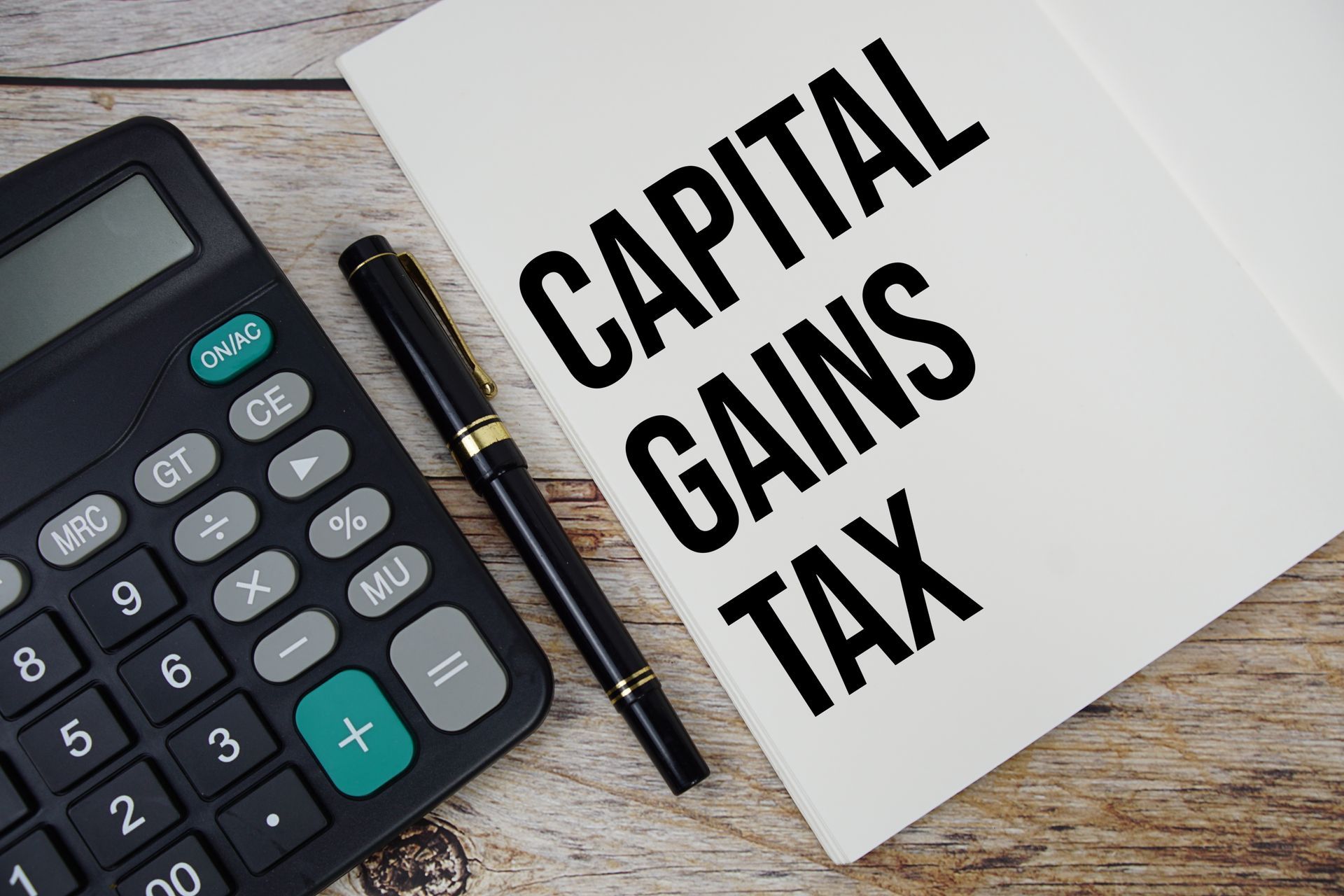Latest articles

Business activity across the UK private sector has fallen again, with weak consumer spending weighing on companies. The latest growth indicator from the Confederation of British Industry (CBI) shows that private sector activity declined faster in the three months to February than in the previous quarter. All sectors reported falling business volumes, pushing the CBI’s growth index down to -27% in February from -23% in January. Looking ahead, firms expect further declines as economic struggles persist. The overall outlook remains tough, particularly for consumer-facing sectors. The CBI is urging the Government to boost business confidence through policy changes, such as reforming the apprenticeship levy, improving business rates, and offering incentives for occupational health. Meanwhile, a survey by accountancy network BDO highlights concerns among mid-sized firms, with nearly half seeking better Government support for exports. Suggested measures include expanding access to UK Export Finance, new trade agreements, and simpler customs rules. Rising workforce costs, including national insurance and the living wage, are also a major concern. A quarter of business leaders cited these as significant pressures, with the Government resisting calls to reverse the planned NICs increase set for April. Talk to us about your business.

Tax changes could cost drivers up to £600. Many electric vehicle (EV) owners are unaware that road tax charges will rise from April 2025. A survey of 2,000 UK car owners by used car retailer Motorpoint found that 83% of EV drivers did not know they would soon need to pay vehicle excise duty (VED). Currently, EVs are exempt from road tax, but starting in April 2025, all electric cars will be taxed. New EVs will be charged £10 for the first year, while those priced under £40,000 will pay £195 annually from the second year. More expensive models – originally costing over £40,000 and registered after 1 April 2025 – will face a £600 annual charge, including a £410 ‘expensive car supplement’. Taxing an EV before April 2025 could save drivers nearly £200 over the next year. Despite Government plans to phase out new petrol and diesel car sales by 2030 and transition fully to zero-emission vehicles by 2035, many industry experts believe these targets are unrealistic. The Motorpoint survey found that 80% of respondents think the Government should do more to support EV adoption. The Department for Transport reviews feedback on measures to encourage zero-emission vehicle uptake as part of its ongoing consultation on the transition. Talk to us about your EV tax concerns.

SPOTLIGHT ON: Making the most of UK government grants for SMEs Unlock funding to grow your business. Small and medium-sized enterprises (SMEs) are the backbone of the economy, comprising 99.9% of all businesses and employing a significant portion of the workforce. To support the growth and sustainability of these enterprises, the government offers a variety of grants tailored to diverse business needs. Understanding and accessing these grants can provide vital financial support, enabling SMEs to innovate, expand, and thrive. The importance of government grants for SMEs Government grants are non-repayable funds allocated to businesses to achieve specific objectives, such as fostering innovation, enhancing sustainability, or stimulating regional development. For SMEs, these grants can alleviate financial constraints, reduce operational risks, and accelerate growth. Unlike loans, grants do not require repayment, making them an attractive funding source for businesses aiming to undertake new projects or expand existing operations. Types of government grants available The government provides grants that cater to various business activities and sectors. Key categories include: Innovation and research grants : Aimed at businesses developing new products, services, or processes. For instance, Innovate UK offers funding to support research and development (R&D) initiatives across multiple industries. Regional development grants : Designed to stimulate economic growth in specific areas. These grants often target businesses that contribute to local employment and infrastructure development. Sector-specific grants : Focused on particular industries, such as renewable energy, manufacturing, or creative arts, to encourage growth and competitiveness within those sectors. Employment and training grants : Intended to support businesses in creating jobs and providing training, thereby enhancing workforce skills and employability. Notable government grants for SMEs Several prominent grants are available to SMEs in 2025: Innovate UK smart grants : These grants support disruptive innovations in any technology area, including science, engineering, and the arts. Eligible projects can receive funding to cover a portion of their costs, depending on their size and scope. Gigabit broadband voucher scheme : This scheme aims to help SMEs upgrade their broadband connections by providing vouchers worth up to £4,500 to cover installation costs. Eligibility criteria and application process Each grant has specific eligibility criteria, often based on factors such as business size, sector, location, and the nature of the project. Common requirements include: Business size: Many grants are targeted at SMEs, typically defined as businesses with fewer than 50 employees and an annual turnover not exceeding €10 million (small), and fewer than 250 employees and an annual turnover not exceeding €50 million (medium). Project type : Grants may be available for activities such as R&D, capital investment, training, or sustainability initiatives. Geographical location : Some grants are region-specific, aiming to boost economic activity in particular areas. The application process generally involves: Researching available grants : Identify grants that align with your business objectives and assess their eligibility criteria. Preparing a detailed proposal : Outline your project, objectives, expected outcomes, and how the grant will be utilised. Submitting the application : Follow the guidelines the grant-awarding body provides, ensuring all required documentation is included. Awaiting assessment : The grant provider will evaluate your application against set criteria and inform you of the outcome. Challenges in securing grants While government grants offer valuable support, securing them can be challenging due to: High competition : Many businesses vie for limited funding, making the selection process highly competitive. Complex application processes : The detailed information required can be time-consuming to compile and may necessitate professional assistance. Specific eligibility requirements : Strict criteria can limit the number of businesses that qualify for specific grants. Despite these challenges, the potential benefits make pursuing grants worthwhile for many SMEs. Strengthening your grant application With many businesses competing for limited funding, a well-prepared grant application can make all the difference. The key to success lies in demonstrating not just eligibility but also the value and impact of the project. SMEs should ensure their applications are clear, well-structured, and backed by evidence. This means detailing how the grant will be used, providing realistic financial forecasts, and outlining measurable outcomes. Funders seek projects which align with their objectives, whether fostering innovation, job creation, or sustainability improvements. Tailoring an application to highlight these factors will increase its chances of approval. Timing is another important factor. Many grants operate on specific funding rounds with set deadlines, so planning ahead is crucial. Businesses that prepare early can avoid last-minute issues, such as missing key documents or underdeveloped proposals. If a business is unsuccessful in securing funding on the first attempt, it’s worth seeking feedback from the awarding body. Understanding why an application was rejected can help refine future submissions, improving the likelihood of success. Many SMEs overlook the importance of partnerships when applying for grants. Collaborating with other businesses, research institutions, or local authorities can strengthen an application by demonstrating broader benefits and shared expertise. Some grants explicitly encourage joint applications, particularly those aimed at innovation and regional development. Partnering with an organisation with a strong track record in securing funding can also provide additional credibility. Avoiding common mistakes in grant applications Many SMEs miss out on valuable funding opportunities due to common mistakes in their grant applications. One of the biggest pitfalls is failing to fully understand the eligibility criteria. While a grant may seem like a perfect fit, businesses must carefully review all requirements before applying. Some grants require a minimum number of employees, a specific turnover threshold, or a clear demonstration of financial need. Misinterpreting these conditions can lead to wasted time and effort on applications that are unlikely to succeed. Another frequent mistake is submitting a weak business case. Grant providers want to see a well-defined project and evidence that it will deliver meaningful results. This means outlining clear, measurable objectives and explaining how the grant funding will be used to achieve them. A vague or overly ambitious proposal can raise red flags, making it harder for assessors to justify awarding funds. Including strong financial projections and, where possible, examples of past successes can help demonstrate credibility. Incomplete applications are another major issue. Many grants require supporting documentation, such as financial statements, project plans, or letters of recommendation. Businesses that submit applications without the necessary documents risk being disqualified outright. Paying close attention to the requirements and double-checking everything before submission is crucial. Timing is also an issue. Some businesses delay applying for grants until they are in financial difficulty, only to find that the process takes longer than expected. Grants are designed to support growth and innovation, not as emergency funding. SMEs should be proactive in identifying funding opportunities early and planning their applications well in advance. Many businesses underestimate the importance of aligning their applications with the grant provider’s goals. For example, if a grant is designed to boost sustainability, the application should clearly highlight how the project contributes to environmental improvements. Tailoring each application to the specific objectives of the grant increases the chances of success. Maximising the benefits of government grants To fully leverage government grants, SMEs should: Align grants with business strategy : Ensure the grant objectives complement your long-term business goals. Maintain accurate records : Keep detailed financial and project records to meet reporting requirements and demonstrate accountability. Seek professional advice : Consult financial advisers or business support organisations to enhance your application and compliance processes. Stay informed : Regularly monitor government announcements and industry news to identify new funding opportunities. Leveraging grants for long-term business growth Securing a government grant can provide an immediate financial boost, but its real value lies in how it is used over the long term. A well-planned project funded by a grant can position an SME for sustained growth, allowing it to expand operations, invest in new technology, or improve efficiency. Businesses that receive grants for research and development often reap benefits beyond the initial funding. Many R&D grants are designed to help businesses develop innovative products or services that give them a competitive edge. A successful innovation can lead to further investment opportunities, strategic partnerships, and increased market share. Businesses that receive funding for digital transformation often find that the improvements have a lasting impact. For example, an SME that uses a grant to implement new accounting or customer management software may see long-term cost savings and improved productivity. The efficiencies gained can free up resources to reinvest in other business areas. Grants that support hiring and training can also have lasting benefits. Expanding the workforce and improving employee skills contribute to long-term business stability and growth. A business that invests in upskilling its employees through grant-funded training may become more adaptable and resilient in the face of industry changes. Once a business has successfully secured one grant, it may be in a stronger position to apply for future funding. Many grant providers look favourably at businesses with a track record of successfully managing grant funding. Keeping thorough records and meeting all compliance requirements makes applying for additional support in the future easier. Beyond direct financial benefits, securing a grant can enhance a business’s credibility. Investors, lenders, and potential partners often view grant-funded businesses as lower-risk and more innovative. This can open doors to further investment and collaboration opportunities. Government grants are more than just a short-term financial boost. When used strategically, they can help SMEs strengthen their position in the market, improve operational efficiency, and drive long-term success. Taking the time to apply carefully, manage funds effectively, and integrate grants into a broader business strategy ensures the best possible return on investment. The role of accountants and advisers in grant management Many SMEs struggle with the administrative burden that comes with applying for and managing grants. Accountants and business advisers play a crucial role in simplifying this process. From identifying suitable grants to ensuring compliance with reporting requirements, professional guidance can save time and reduce stress. One of the most valuable services an accountant can provide is financial forecasting. Many grant applications require detailed financial projections, including cashflow forecasts and return on investment estimates. A well-prepared financial plan can demonstrate a project's viability, increasing the likelihood of approval. Once a grant is secured, conditions are often attached, such as reporting how funds are used or meeting specific project milestones. Failure to comply with these requirements can result in funding being withdrawn. Having a professional on hand to manage financial tracking and reporting ensures that businesses remain compliant and maximise the benefits of their funding. Businesses that take a strategic approach to grant funding, with the support of experienced advisers, are more likely to use it effectively. The right financial guidance can turn a one-time grant into long-term business growth, helping SMEs maximise available opportunities. Wrapping up Government grants present significant opportunities for SMEs to access funding that can drive innovation, expansion, and sustainability. By understanding the available grants, meeting eligibility criteria, and effectively managing the application process, businesses can secure essential support to achieve their objectives. We are committed to supporting SMEs and are here to assist you with grant applications and financial planning. Get in touch to ensure you make the most of the opportunities available.

Tax changes could cost drivers up to £600. Many electric vehicle (EV) owners are unaware that road tax charges will rise from April 2025. A survey of 2,000 UK car owners by used car retailer Motorpoint found that 83% of EV drivers did not know they would soon need to pay vehicle excise duty (VED). Currently, EVs are exempt from road tax, but starting in April 2025, all electric cars will be taxed. New EVs will be charged £10 for the first year, while those priced under £40,000 will pay £195 annually from the second year. More expensive models – originally costing over £40,000 and registered after 1 April 2025 – will face a £600 annual charge, including a £410 ‘expensive car supplement’. Taxing an EV before April 2025 could save drivers nearly £200 over the next year. Despite Government plans to phase out new petrol and diesel car sales by 2030 and transition fully to zero-emission vehicles by 2035, many industry experts believe these targets are unrealistic. The Motorpoint survey found that 80% of respondents think the Government should do more to support EV adoption. The Department for Transport reviews feedback on measures to encourage zero-emission vehicle uptake as part of its ongoing consultation on the transition. Talk to us about your EV tax concerns.

Landlords and sole traders to receive letters from April. HMRC is set to inform taxpayers affected by Making Tax Digital (MTD) for Income Tax. Initially, these will go to landlords, sole traders, and self-employed individuals earning over £50,000. From 6 April 2026, those earning above this threshold must report income quarterly. While this is the first time HMRC has directly notified individuals, accountants are also urged to prepare their clients. Letters will be sent from April 2025 to taxpayers whose 2023/24 self-assessment returns indicate income at or above £50,000. Early sign-up is available with two options: Join for the 2025/26 tax year : This allows firms and clients to familiarise themselves with the system before the deadline. Early adopters will receive support from a dedicated HMRC team. Join for the 2026/27 tax year : Mandatory participation begins. Some taxpayers, however, including those on HMRC payment plans, receiving income from trusts, or using profit averaging, are ineligible for early enrolment. Exemptions exist for age, disability, location, or religious beliefs. Those already exempt from MTD for VAT do not need to reapply. As these changes approach, accountants must ensure they understand their clients' impacts. Talk to us about MTD.

The Bank of England (BoE) has cut the base rate by 0.25%, bringing it to its lowest since May 2023. Seven members of the Monetary Policy Committee (MPC) supported the move, but two pushed for a deeper cut to 4.25%. Governor Andrew Bailey warned that inflation could climb to 3.7% this year. Despite progress in reducing inflation over the past two years, the Bank emphasised the need to keep rates at a restrictive level. Inflation currently stands at 2.5%, while GDP grew by just 0.1% in November. The Bank does not expect any significant economic growth until mid-2025. Concerns are mounting over additional pressures on businesses, including an increase in employers’ National Insurance contributions and the rise in the minimum wage from April. These changes have dampened business confidence heading into 2025. The rate cut relieves businesses struggling with rising costs, but the UK is cutting rates slower than major global competitors. There are also fears over the potential impact of US-imposed tariffs on the EU, which could indirectly harm UK trade. Despite forecasting higher inflation, Bailey did not mention the US tariff threat in his remarks. Talk to us about your finances.

SPOTLIGHT ON: Using software to streamline accounting operations Maximising efficiency with digital accounting tools. In the modern business environment, efficiency and accuracy in financial management are paramount. We understand businesses' challenges in maintaining precise financial records while striving for growth. Implementing accounting software can be a game-changer, offering numerous benefits that streamline operations and enhance decision-making. This guide explores how the right tools can simplify financial processes, improve compliance, and free up time to focus on growing your business. Benefit 1: Automating routine tasks One of the primary advantages of accounting software is the automation of repetitive tasks. Processes such as invoicing, payroll, and tax calculations can be handled automatically, reducing the time and effort required for manual entry. This automation saves time and minimises the risk of human error, ensuring that your financial data remains accurate. Benefit 2: Enhancing financial accuracy Manual data entry is prone to errors, significantly affecting financial reporting and compliance. Accounting software minimises these risks by providing accurate calculations and consistent data entry protocols. This precision ensures that your financial statements reflect the true state of your business, aiding in compliance with tax regulations. Benefit 3: Real-time financial insights Access to real-time financial data is crucial for informed decision-making. Accounting software offers up-to-date insights into your business's financial health, allowing you to monitor cashflow, track expenses, and assess profitability anytime. This immediacy enables proactive management and swift responses to financial challenges. Benefit 4: Facilitating compliance with tax regulations Navigating the tax landscape can be daunting. Accounting software simplifies this by keeping you updated with the latest tax laws and ensuring your financial records comply. Features such as automated tax calculations and report generation make it easier to meet HMRC requirements, reducing the risk of penalties. Benefit 5: Improving client relationships Maintaining strong client relationships is essential for accounting practices. Accounting software enhances client interactions by providing accurate and timely financial information. This transparency builds trust and allows for more strategic discussions based on real-time data. According to a report by Libeo, 67% of accountants say cloud technology is improving client interactions and service offerings. Benefit 6: Adapting to technological advancements The accounting industry is experiencing a significant shift towards digitalisation. A report by Sage and Demos found that widespread AI adoption in accounting practices could add £2 billion to GDP and create nearly 20,000 jobs. Embracing accounting software positions your business to take advantage of these technological advancements, ensuring your business remains competitive in the evolving market. Customising software to suit your business needs Every business has unique financial processes, and off-the-shelf accounting software may not always align perfectly with specific requirements. Many platforms offer customisation options, allowing businesses to tailor features such as charts of accounts, reporting formats, and user access levels. For instance, a retail business may require advanced inventory tracking, while a consultancy firm may prioritise time-tracking and project-based invoicing. Platforms like Xero, Sage, and QuickBooks provide industry-specific add-ons and configurations, ensuring that businesses can adapt the software to meet their operational needs. Beyond core functionality, businesses can also personalise dashboards and reports to highlight key performance indicators (KPIs) relevant to their financial goals. By customising accounting software, businesses can optimise workflow efficiency and gain deeper insights into their financial performance. Choosing the right software for your business size The size and complexity of a business significantly influence the choice of accounting software. Small businesses and sole traders may only require basic bookkeeping and invoicing features, whereas larger organisations need advanced capabilities such as multi-currency transactions, consolidated reporting, and extensive automation. For micro-businesses, user-friendly software like FreeAgent or Zoho Books offers straightforward solutions without overwhelming features. In contrast, mid-sized businesses may benefit from Sage or QuickBooks Online, which provide scalable options that accommodate growth. Larger enterprises with more complex accounting needs often use software like NetSuite or SAP Business One, which offer enterprise-level customisation and automation. By selecting software that aligns with business size and growth plans, companies can avoid paying for unnecessary features while ensuring they have the necessary tools to support expansion. How software improves cashflow management Accounting software not only tracks incoming and outgoing payments, but also offers AI-driven forecasting tools. These tools analyse historical data and predict cashflow trends, allowing businesses to plan for future expenses, identify potential shortfalls, and manage credit more effectively. This is particularly useful for businesses with seasonal revenue fluctuations, helping them allocate funds efficiently and avoid cash shortages. The role of accounting software in financial reporting and audits Accurate financial reporting is essential for compliance and business decision-making. Accounting software simplifies report generation by automatically categorising transactions and compiling data into structured financial statements. Accounting software streamlines daily financial management and audits by maintaining structured, traceable records. Features such as automated categorisation, built-in audit trails, and secure data storage allow businesses to provide auditors and regulatory bodies with clear, verifiable financial statements. By maintaining well-organised digital records, businesses can comply with regulatory requirements and gain better financial oversight and strategic insights. Overcoming adoption challenges While the benefits are clear, some businesses may face challenges adopting new technologies. To overcome this, it's important to choose user-friendly software and provide adequate training to staff, ensuring a smooth transition. Integrating software with other business tools One of the biggest advantages of modern accounting software is its ability to integrate seamlessly with other essential business tools. Many platforms offer direct integrations with customer relationship management (CRM) systems, payment gateways, and inventory management software. This interconnected approach streamlines workflows, reducing the need for duplicate data entry and improving overall efficiency. For example, integrating accounting software with an e-commerce platform like Shopify or WooCommerce automatically records sales transactions, eliminating the need for manual updates. Similarly, linking software with payroll systems like BrightPay or Xero Payroll simplifies salary calculations and tax deductions, ensuring accuracy and compliance. These integrations give businesses a more comprehensive view of their financial health while reducing administrative burdens. According to a study by Xero, businesses that integrate their accounting software with other tools report a 30% improvement in operational efficiency. Cloud accounting vs traditional software: Making the right choice Cloud solutions offer businesses a competitive edge through automatic software updates, real-time data access, and integration with other digital tools. This ensures businesses can manage finances flexibly, regardless of location, without needing manual updates or on-premises infrastructure. A 2023 report by QuickBooks found that 78% of small businesses in the UK now use cloud-based accounting solutions due to their flexibility and cost-effectiveness. Cloud accounting also plays a crucial role in compliance with Making Tax Digital (MTD) requirements, ensuring that VAT submissions are done correctly and on time. This will become even more relevant when HMRC brings in further MTD requirements for sole traders. Data security and compliance considerations Financial data is highly sensitive, so ensuring robust security measures is a key consideration when using accounting software. Cloud-based platforms employ high-level encryption and multi-factor authentication to protect data, but businesses must also implement strong internal policies to prevent unauthorised access. GDPR compliance is another essential factor. Businesses using cloud accounting software must ensure their provider adheres to GDPR data protection and storage guidelines. Platforms like FreeAgent and QuickBooks Online offer compliance features, including secure data storage within the UK or EU jurisdictions. Additionally, implementing role-based access controls within accounting software ensures that only authorised personnel can access specific financial information. This reduces the risk of internal fraud and maintains data integrity. The future of accounting software: AI and automation The accounting industry is rapidly evolving, with AI increasing in automating tasks such as bank reconciliation, invoice processing, and financial forecasting. AI-powered tools can analyse large volumes of financial data in seconds, providing valuable insights that help businesses make better decisions. A recent survey by Sage found that 58% of accountants believe AI will transform how financial data is processed within the next five years. Automated bookkeeping, fraud detection, and AI-generated financial reports are just a few advancements businesses can expect. Embracing AI-driven accounting software improves efficiency and frees accountants to focus on advisory services, helping businesses grow strategically. As AI capabilities expand, integrating smart accounting solutions will become a key competitive advantage for businesses. Final thoughts Implementing accounting software is a strategic move that offers numerous benefits, from automating routine tasks to providing real-time financial insights. We are committed to helping businesses harness these tools to enhance efficiency and achieve financial goals. By embracing digital solutions, you can position your business for success in an increasingly competitive environment. Get in touch to discuss how software can streamline your accounting operations.

From April 2027, unused pension pots and death benefits will be included in an individual’s estate for inheritance tax (IHT) purposes. The Association of Taxation Technicians (ATT) has warned that this change, announced in the Autumn Budget, could increase costs and cause delays for around 50,000 families a year. Pension pots are exempt from IHT rules, making them a popular tool for estate planning. Under the new system, personal representatives handling a deceased person’s affairs must work with Pension Scheme Administrators (PSAs) to determine the value of any unspent pension assets and allocate allowances accordingly. Each pension fund will then be responsible for paying its share of IHT before probate can be granted. The ATT has raised concerns that these additional administrative steps will increase the time and effort required to finalise estates. Delays in obtaining probate could create financial difficulties for beneficiaries, while the added complexity may result in higher costs for professional assistance. The ATT has called for a separate IHT regime for pensions to reduce the impact on bereaved families. With pensions playing a key role in IHT planning, it may be worth reviewing your arrangements to ensure they remain tax-efficient. While some view tax-free pension pots as a loophole, others argue they provide a vital means of passing on wealth. Talk to us about your pension.

The Government’s use of artificial intelligence (AI) is expanding, but departments must work together to manage risks effectively. Cabinet Office officials recently told the Treasury Committee that AI tools are used in customer service across many Government departments. However, HMRC confirmed that its helpline advisers do not currently use AI, though it is trialling a chatbot on its website. HMRC has used machine learning and natural language processing for over a decade in compliance targeting and debt risk prediction. Its most well-known tool, HMRC Connect, was launched in 2010 to tackle tax evasion. An HMRC insider said all AI initiatives follow an AI assurance, ethics, and risk management framework, which external ethics experts review. HMRC stressed that AI systems impacting taxpayers must be explainable, human-supervised, and compliant with data protection rules. The professional standards committee, chaired by HMRC’s director general for customer strategy, last met in October 2024. Independent advice has recommended forming an AI steering group to collaborate across departments and avoid a siloed approach. HMRC’s chatbot recently underwent second-phase testing with 15,000 business users. While initial feedback was positive, concerns remain over accuracy and AI ‘hallucinations’. Users are warned to verify chatbot responses against GOV.UK. Separately, the Treasury Committee has launched an inquiry into AI use in banking, pensions, and financial services. Submissions are due on 17 March. Talk to us about your business’s experience with AI.

SPOTLIGHT ON: Retirement savings in your 50s: How to catch up Making up for lost time with smart pension planning. By your 50s, retirement planning often moves to the top of the financial agenda. If your pension pot isn’t where you’d like it to be, there are ways to increase contributions, take advantage of tax reliefs, and strengthen your long-term financial security. This guide outlines the latest pension rules, allowances, and strategies, helping you make informed decisions about your retirement savings. Whether you’re looking to top up your pension, explore additional investment options, or adjust your approach, having a clear understanding of your options can make a significant difference to your future financial stability. The current outlook for retirement saving in the UK Retirement savings in the UK typically include workplace, private, and state pensions. Automatic enrolment has significantly increased participation, with 88% of eligible employees enrolled in a workplace pension in 2023, covering approximately 20.8 million individuals. Many people underestimate how much they need to save for retirement, with the Pensions Policy Institute highlighting a gap between expected and actual retirement income. By your 50s, earnings may be more stable, but financial commitments – such as a mortgage or supporting children – can still be a priority. However, with careful planning, higher earning potential offers a chance to boost pension contributions and strengthen retirement savings. Tax relief and pension allowances for 2025/26 Annual allowance The annual allowance is the maximum you can contribute to pensions each tax year while still benefiting from tax relief. From April 2023, it increased to £60,000 for most people. Money purchase annual allowance (MPAA) If you have started taking pension benefits flexibly (for example, using flexi-access drawdown), the MPAA might apply. This restricts contributions to £10,000 per year once triggered. Lifetime allowance (LTA) The Government abolished the Lifetime Allowance (LTA) on 6 April 2024, removing the previous tax charge for exceeding a set lifetime pension pot limit. This means that there is no LTA from the 2025/26 tax year onwards, and individuals can contribute to their pensions without facing additional tax penalties for breaching a lifetime cap. However, standard tax rules still apply to withdrawals, and certain lump sums remain subject to limits. Personal allowance and tax thresholds Income tax thresholds remain frozen until April 2028. The personal allowance is £12,570, with 20% tax up to £50,270, 40% tax up to £125,140, and 45% tax above £125,140. In 2025/26, you can expect these bands to remain the same unless new policies intervene. Workplace pensions in your 50s Review your contribution rate Auto-enrolment sets a minimum total contribution of 8% of qualifying earnings, including at least 3% from your employer. Contributing more than the minimum is often beneficial if you want to catch up on retirement savings. Some employers match higher contributions, so find out if yours does. Use salary sacrifice A salary sacrifice agreement allows you to reduce your gross salary in exchange for higher employer pension contributions. This lowers your National Insurance liability and can increase pension funding. However, salary sacrifices may affect other benefits such as life insurance or bonuses. Explore additional voluntary contributions (AVCs) If your workplace offers a defined benefit (final salary) scheme, AVCs can boost your retirement income. Tax relief for AVCs works like it does for other pension contributions, so you usually receive relief up to your available allowance. State Pension considerations Understand your State Pension age Your State Pension age may be 66 or 67, depending on your date of birth. Future increases are possible, but any changes must be passed into law. Check your National Insurance record To get the full new state pension, you need around 35 qualifying years of NI contributions. Review your NI record online, and if there are gaps, you may opt to make voluntary contributions to improve your State Pension. Projected amount of the State Pension The full new State Pension is £221.20 per week for 2024/25 and is set to rise to £230.25 per week from April 2025. This increase follows the triple lock mechanism, which ensures the State Pension rises by the highest of inflation, average earnings growth, or 2.5%. The 2025/26 increase is based on average earnings growth of 4.1%. Keep an eye on official updates for any further changes. Increasing your pension contributions Catch-up approach In your 50s, higher earnings or lower expenses may allow you to increase pension contributions. If you pay 40% tax, a £12,000 gross contribution effectively costs £7,200 after tax relief. Ensure your contributions remain within the £60,000 annual allowance to avoid potential tax charges. Carry forward rules Carry forward lets you use unused annual allowance from up to three previous tax years if you had a pension in those years. This can allow significant one-off contributions. If you have enough earnings and capacity for tax relief, carry forward may help you catch up quickly. Balancing other savings At this stage in your life, you may also want to pay off a mortgage, build an emergency fund, or address high-interest debts. Compare your mortgage interest rate to the long-term growth of pension investments, and if the pension offers higher returns (especially with tax relief), extra pension contributions may be more appealing. However, reducing high-interest debts is often wise before stepping up pension savings. Drawing benefits and avoiding early withdrawal pitfalls When can you start drawing your pension? The normal minimum pension age will rise to 57 in April 2028. By 2025/26, most individuals can access pensions from at least age 55. If you withdraw too early, however, you might deplete your funds before retirement. Tax implications of early withdrawals Taking pension benefits early can trigger the MPAA, lowering your future contribution limit to £10,000 a year. If you plan to keep contributing significantly, be aware of how early withdrawals might limit you. Partial retirement Some people choose to reduce work hours in their 50s and draw partial pension benefits. This can help you transition into retirement, but you should check if your overall pot can still grow or maintain its value; you might pay income tax on withdrawals, depending on your allowances. Diversifying your retirement strategy Consider ISAs and other savings An Individual Savings Account (ISA) offers tax-efficient savings alongside pensions. You can invest up to the annual ISA allowance (currently £20,000). Withdrawals are free of income tax. In retirement, these funds can complement your pension and give you more flexibility. Investments outside of pensions Some people choose to invest in property, shares, or bonds. These can yield returns but also carry risks. They are also likely to be less tax efficient. If you have limited time to rebuild savings, you may prefer investments that are less prone to volatility. Seek advice from your accountant or financial adviser if you need to decide on risk levels that suit your age and goals. Self-employed considerations If you are self-employed, auto-enrolment does not apply. You must set up your own pension, such as a personal pension or SIPP. In your 50s, you can still receive tax relief on contributions within your annual allowance. Increase contributions if your earnings allow, especially while you have the carry forward option. Reviewing and adjusting your plan Regular pension forecasts Ask your pension provider for updated projections. This allows you to track progress toward your retirement target. If you find a shortfall, you can increase contributions or adjust your investments. Adjust contributions when possible If you receive a salary increase or bonus, direct a share of it to your pension. This approach ensures consistent growth and reduces the chance of spending extra earnings on non-essentials. Monitor legislation changes Pension policies can shift with Government budgets. Check official sources such as GOV.UK or HMRC for announcements. If changes affect the annual allowance or the MPAA, adjust your strategy accordingly. Talk to your employer Your employer might offer more generous matching or additional benefits. Also, they can explain any changes to workplace pensions that could affect your contributions for the 2025/26 tax year. Potential risks and how to address them Overexposure to certain assets : Relying on one type of investment can lead to higher risks. Diversify across different asset classes to reduce vulnerability. Delaying contributions : Time in the market is important for compound growth. Contributing sooner, even if the amount is moderate, is generally beneficial. Ignoring inflation : Rising living costs can erode the real value of your savings. Consider strategies or funds that aim to outpace inflation over the long term. Accessing your pension too early : Early withdrawals reduce your pot’s ability to grow. Evaluate whether you truly need the funds and the possible tax implications. Practical steps to boost your pension before retirement Carry forward : Check your unused allowances from the past three tax years. You can make a large lump-sum contribution in 2025/26 if you have enough earnings and space for tax relief. Increase regular contributions : Small monthly increases can add up significantly over the remaining years to retirement. Review monthly outgoings : Identify unnecessary spending and redirect these funds toward your pension. Maximise employer matching : If your employer offers to match above the minimum, contribute enough to claim the maximum match. Track old pension pots : Consolidating older pensions might reduce fees and simplify management. Key takeaways You can still improve your retirement prospects in your 50s. By taking note of the current annual allowance, carrying forward opportunities and workplace pension benefits, you can raise your contributions. Watch for changes to pension legislation, tax thresholds, and State Pension rules, and make sure you understand the impact of early withdrawals. Combine your pension with other savings vehicles like ISAs to give yourself more flexible options. Seek regulated professional advice if you need personalised guidance, and review your plan regularly to ensure it remains on track. With active steps, you can catch up on retirement savings and strengthen your finances before you reach State Pension age. Speak to us today to ensure you're making the most of your pension allowances and tax reliefs.

Following the Bank of England’s base rate cut to 4.5% on 6 February, HMRC will lower its late payment and repayment interest rates from 25 February. The late payment interest rate will drop from 7.25% to 7.0%, while the repayment interest rate will decrease from 3.75% to 3.5%. These changes reflect HMRC’s standard approach, where late payment interest is set at the base rate plus 2.5%, and repayment interest is set at the base rate minus 1%, with a minimum floor of 0.5%. For corporation tax, interest on underpaid quarterly instalments will fall to 5.5% from 5.75% on 17 February – one week earlier than the main rate change. Similarly, interest on overpaid quarterly instalments and early corporation tax payments will drop to 4.25%. Looking ahead, from 6 April 2025, HMRC will increase its premium on late payment interest, raising the surcharge from 2.5% to 4% over the base rate. Announced in last October’s Budget, this move will generate £255 million a year from 2025/26, targeting tax avoidance and late payments. Despite these adjustments, HMRC continues to pay lower interest on overpayments than on late payments. It has defended this policy by citing international tax authority practices and comparing commercial loan and deposit rates. Talk to us about your finances.

Year-end tax guide 2024/25 How to use this guide As we approach the end of the 2024/25 tax year, it’s a good time to reflect on the year’s financial developments and their impact on tax planning. The UK economy has continued to navigate a challenging landscape, with high interest rates affecting businesses and individuals alike. Inflation has begun to stabilise, offering some relief, but persistent pressures on household budgets remain. Global economic uncertainty and domestic policy changes have further underscored the importance of strategic financial planning. The Chancellor’s controversial Autumn Budget in 2024 introduced a mix of measures aimed at balancing fiscal stability with support for economic resilience. While targeted reliefs for small businesses and incentives to encourage investment in key sectors were announced, some changes — such as an increase in employers' National Insurance contributions — have sparked debate about their broader impact. These developments highlight the need to stay informed and take a proactive approach to managing your financial affairs. Tax planning is not just about compliance; it’s an opportunity to optimise your finances and make full use of the reliefs and allowances available before they reset on 6 April 2025. Whether maximising pension contributions, reviewing inheritance tax strategies, or taking advantage of ISAs, acting now can help you minimise liabilities and prepare for the year ahead. This guide provides a comprehensive overview of the key allowances, tax breaks, and exemptions available, alongside practical planning points to help you take action. We’ve tailored this information to reflect the latest legislative changes, ensuring you’re equipped to make informed decisions before the tax year closes. If you’d like more tailored advice or help implementing any of the suggestions in this guide, please don’t hesitate to contact us. Personal allowances and reliefs Minimising your personal tax bill For the 2025/26 tax year, the standard Personal Allowance remains at £12,570, meaning you can earn up to this amount before paying Income Tax. Earnings above this threshold are taxed at rates of 20% (basic rate), 40% (higher rate), and 45% (additional rate) in England, Wales, and Northern Ireland. In Scotland, different tax bands apply. If your income exceeds £100,000, your Personal Allowance decreases by £1 for every £2 earned over this limit. This effectively creates a 60% marginal tax rate on income between £100,000 and £125,140, as the entire Personal Allowance is withdrawn within this band. Marriage allowance If you're married or in a civil partnership, and one partner has an income below the Personal Allowance while the other is a basic-rate taxpayer, you may benefit from the Marriage Allowance. This allows the lower-earning partner to transfer £1,260 of their unused Personal Allowance to their partner, potentially reducing the tax bill by up to £252. Tax on savings and investments Personal savings allowance : Basic-rate taxpayers can earn up to £1,000 in savings interest tax-free, while higher-rate taxpayers have an allowance of £500. Additional-rate taxpayers do not receive this allowance. Dividend allowance : For the 2025/26 tax year, the Dividend Allowance remains at £500. Dividend income exceeding this amount is taxed at 8.75% (basic rate), 33.75% (higher rate), or 39.35% (additional rate). Key considerations Utilising allowances : Ensure both you and your spouse or civil partner fully utilise your Personal Allowances. Transferring income-generating assets between partners can help achieve this. Reducing high marginal tax rates : To retain your total Personal Allowance and avoid the 60% marginal tax rate, consider making pension contributions or charitable donations to reduce your adjusted net income below £100,000. Tax-efficient alternatives : To minimise tax liabilities, explore tax-efficient alternatives to bonuses or salary increases, such as employer pension contributions or salary sacrifice arrangements. Investments: The Enterprise Investment Scheme (EIS) and Seed Enterprise Investment Scheme (SEIS) offer generous income tax reliefs (30% for EIS and 50% for SEIS) while encouraging investment in early-stage companies. They can be particularly effective in reducing personal tax liabilities and are worth considering as part of a broader tax strategy. Rent-a-Room relief : If you rent out a furnished room in your home, you can earn up to £7,500 tax-free under the Rent-a-Room scheme. By proactively managing your personal allowances and reliefs, you can effectively minimise your tax bill and optimise your financial position for the 2025/26 tax year. ISAs Maximising your tax-free savings Individual Savings Accounts (ISAs) offer a tax-efficient way to save or invest, with various types catering to different financial goals. For the 2025/26 tax year, the overall ISA allowance remains at £20,000. Types of ISAs and their limits Cash ISA : Allows you to save cash without paying tax on the interest earned. You can allocate up to a £20,000 allowance to a Cash ISA. Stocks and Shares ISA : Enables investments in stocks, shares, and funds with tax-free growth and dividends. You can invest up to £20,000 or split the allowance between different ISAs. Innovative Finance ISA : Includes peer-to-peer loans and crowdfunding investments. The maximum investment is up to £20,000, subject to the overall ISA limit. Lifetime ISA (LISA) : Designed for individuals aged 18 to 39 to save for a first home or retirement. You can contribute up to £4,000 per year, with the government adding a 25% bonus (up to £1,000 annually). Contributions to a LISA count towards the overall £20,000 ISA allowance. Junior ISA For individuals under 18, a Junior ISA allows savings of up to £9,000 per tax year, with tax-free interest or investment growth. Key considerations Use it or lose it : The ISA allowance does not roll over; ensure you utilise your allowance within the tax year to maximise tax-free savings. Strategic allocation : Depending on your financial goals, consider how to allocate funds across different ISAs to optimise tax benefits. Spousal contributions : If you have maximised your ISA allowance, assess whether your spouse or civil partner has unused allowance to enhance tax-free savings further. First-time buyers : Utilising a LISA can be advantageous for first-time home purchases, as it provides a government bonus to boost savings. By effectively leveraging ISAs, you can enhance your tax-free savings and investments, aligning with your financial objectives for the 2025/26 tax year. Pensions Saving for your retirement Maximising your pension contributions before the end of the tax year is one of the most effective ways to reduce your taxable income and save for retirement. Pension contributions benefit from tax relief, which can make them particularly attractive for higher earners. For the 2025/26 tax year, the annual pension allowance remains at £60,000. This includes all contributions you, your employer, and any third parties make. However, this allowance may be tapered for individuals with threshold income over £200,000 and an adjusted annual income of over £260,000, reducing by £1 for every £2 above this threshold. The minimum annual allowance for high earners is £10,000, which applies to those with a total income of £360,000 or more. Suppose you had a pension scheme during a previous tax year but didn’t fully use your allowance. In that case, you can carry forward unused amounts for up to three years, provided you meet the eligibility criteria. Key considerations Carry forward unused allowances : Review any unused allowances from 2022/23, 2023/24, or 2024/25 tax years to see if you can contribute more this year. Tax relief for higher earners : Ensure you claim any additional tax relief on pension contributions. Higher-rate taxpayers can claim an extra 20% tax relief, and additional-rate taxpayers can claim 25%, often via self-assessment. Inheritance tax benefits : Pension funds are typically excluded from your estate for inheritance tax purposes. Maximising contributions can help with long-term estate planning. Over-55s considerations : If you’re over 55 and considering accessing your pension, ensure you understand the potential tax implications, such as triggering the money purchase annual allowance (MPAA), which limits future contributions to £10,000. Important deadlines Ensure all contributions are paid into your pension scheme by 5 April 2025 to qualify for tax relief in the 2024/25 tax year. Employer contributions must be paid before the company’s financial year-end to receive corporation tax relief in the same accounting period. By taking advantage of pension contribution rules and tax reliefs, you can optimise your retirement savings while reducing your tax liability for the current tax year. Inheritance tax Reducing your estate’s tax burden Inheritance tax (IHT) is charged at 40% on the value of your estate that exceeds the nil-rate band, which remains at £325,000 for the 2025/26 tax year. An additional residence nil-rate band (RNRB) of £175,000 is available if your home (or a share of it) is left to direct descendants. When combined, this means a total IHT-free threshold of up to £500,000 for individuals or £1 million for married couples or civil partners. For estates worth over £2 million, the RNRB tapers by £1 for every £2 above this threshold. It’s important to note that unused allowances can be transferred to a surviving spouse or civil partner, doubling the threshold available on the second death. Gifts made during your lifetime are generally exempt from IHT if you survive for seven years after making them. However, gifts within this timeframe may still be subject to tax. Taper relief could reduce the tax rate on gifts made between three and seven years before death. Key considerations Make use of exemptions : The annual gift exemption allows you to give up to £3,000 tax-free each year. You can also make small gifts of up to £250 per person, wedding gifts, or gifts from surplus income without triggering IHT. Plan lifetime giving : Consider using the seven-year rule for larger gifts to reduce the value of your estate over time. Trusts and estate planning : Putting assets into a trust can help reduce the value of your estate subject to IHT, but it’s important to get professional advice to ensure compliance. Residence nil-rate band : Review your will to ensure your estate qualifies for the RNRB if applicable, and confirm how property is passed to direct descendants. Spousal exemptions : Ensure you take advantage of the full spousal transfer of unused IHT allowances to maximise the tax-free thresholds on the second death. Business and agricultural reliefs : For qualifying assets, investigate reliefs that could reduce IHT on business or agricultural property. By planning your estate effectively, you can reduce the amount of IHT payable and ensure your assets are passed on to your loved ones in the most tax-efficient way possible. If you’re unsure about the best strategy for your situation, we’re here to help. Property taxes Understanding your obligations Property taxes apply to various transactions and ownership scenarios, from buying a new home to managing additional properties. With different rules across the UK, understanding your obligations is key to effective tax planning. Stamp duty land tax (SDLT) – England and Northern Ireland In England and Northern Ireland, stamp duty land tax is payable on property purchases above £250,000 until 31 March 2025. For first-time buyers, the nil-rate threshold is higher at £425,000 for properties valued up to £625,000. Rates for residential properties: £0-£250,000 : 0% £250,001-£925,000 : 5% £925,001-£1.5 million : 10% Over £1.5 million : 12% A 5% surcharge applies to additional residential properties on top of the standard SDLT rates. Upcoming changes (effective from 1 April 2025): Standard residential purchases : The nil-rate threshold will decrease to £125,000. This means SDLT will be payable on properties valued above £125,000. First-time buyers : The nil-rate threshold for first-time buyers will reduce to £300,000 for properties valued up to £500,000. For properties worth between £300,001 and £500,000, a 5% SDLT rate will apply to the portion above £300,000. Properties over £500,000 will not be eligible for first-time buyer relief, and standard rates will apply. Land and buildings transaction tax (LBTT) – Scotland In Scotland, LBTT applies to residential property purchases above £145,000. First-time buyers pay no tax on properties worth up to £175,000. Rates include: £0-£145,000 : 0% £145,001-£250,000 : 2% £250,001-£325,000 : 5% £325,001-£750,000 : 10% Over £750,000 : 12% An 8% additional dwelling supplement applies to purchases of second homes or buy-to-let properties worth over £40,000. Land transaction tax (LTT) – Wales In Wales, LTT applies to residential property purchases above £225,000 for those who don’t own other properties. The rates are: £0-£225,000 : 0% £225,001-£400,000 : 6% £400,001-£750,000 : 7.5% £750,001-£1.5 million : 10% Over £1.5 million : 12% A higher rate of residential property tax applies to additional residential properties purchased in Wales. Key considerations First-time buyer reliefs : Ensure you meet the criteria to benefit from higher nil-rate bands for first-time buyers. Additional property planning : Factor in the surcharge when purchasing buy-to-let properties or second homes. Deferred or gifted property : Consider the tax implications of transferring or gifting property, which may attract capital gains tax or inheritance tax. Regional differences : Property tax rates and thresholds vary significantly across the UK, so check the rules specific to your location. Timing of purchases : If you plan to buy a property, consider how upcoming tax changes (e.g. the end of temporary SDLT relief) might impact your liabilities. Property taxes can significantly impact your overall financial position, so careful planning is essential. If you need help navigating these taxes or optimising your property transactions, contact us. Capital gains tax Rules, exemptions, and planning opportunities Capital gains tax (CGT) is payable on the profit you make when selling or disposing of certain assets, such as property, shares, or business assets, that have increased in value. The tax applies to the gain, not the total amount received. With the annual CGT exemption significantly reduced for the 2024/25 and 2025/26 tax years, careful planning is more important than ever. Key allowances for 2025/26 The annual CGT exemption is £3,000. Gains above this threshold are subject to tax. Married couples and civil partners can each claim the £3,000 exemption, allowing a combined total of £6,000. Gains on most assets are taxed at 18% (basic-rate taxpayers) or 24% (higher- and additional-rate taxpayers). Trustees typically pay 24% on gains from both residential property and other chargeable assets. Key considerations Use your annual exemption : Ensure you make the most of the £3,000 exemption before 5 April 2025, as unused allowances cannot be carried forward. Spousal and partner planning : Transferring assets to a spouse or civil partner before disposal can allow both exemptions to be used, reducing CGT liability. Offsetting losses : If you have assets that have fallen in value, consider selling them to realise a loss, which can be offset against your gains in the same tax year or carried forward. Deferring or rolling over gains : Certain investments, such as those qualifying for the Enterprise Investment Scheme (EIS) or Seed Enterprise Investment Scheme (SEIS), may allow gains to be deferred or rolled over into new investments. Business reliefs : If you’re selling a business, investigate whether you qualify for business asset disposal relief (formerly entrepreneurs' relief), which reduces CGT on qualifying gains to 10%. However, this rate is set to increase to 14% for disposals made on or after 6 April 2025, and further to 18% for disposals on or after 6 April 2026. Main residence exemption : If you sell your main home, you may qualify for private residence relief, which exempts most or all of the gain from CGT. Consider making a main residence election for second homes or rental properties to optimise relief. Important deadlines If you sell a residential property that is not your main residence, you must report the gain and pay any CGT owed within 60 days of the sale completion. For other assets, CGT is usually paid via self-assessment by 31 January following the tax year of the disposal. By understanding and planning for CGT, you can minimise your tax liability and make the most of the available reliefs and exemptions. We're here to guide you if you need help with a specific disposal or understanding your obligations. Business asset disposal relief Reducing capital gains tax when selling your business Business asset disposal relief (formerly known as entrepreneurs' relief) allows qualifying business owners to reduce the rate of capital gains tax (CGT) on the disposal of their business or business assets. Instead of the standard CGT rates, gains that qualify for this relief are taxed at a reduced rate of 10%, up to a lifetime limit of £1 million. From 6 April 2025, the tax rate on gains qualifying for BADR will increase from 10% to 14%. Eligibility criteria To qualify for business asset disposal relief, the following conditions must be met: Ownership : You must have owned the business or business assets for at least two years prior to the sale. Type of business : The business must be a trading business, not an investment business. Shares and securities : If selling shares or securities, the company must be a trading company, and you must hold at least 5% of both: The shares and voting rights, and Either the profits available for distribution or disposal proceeds if the company is sold. 4. Enterprise management incentive (EMI) shares : Special rules apply, with some conditions relaxed, for shares acquired through an EMI scheme. Lifetime limit A lifetime limit of £1 million applies to the total gains eligible for business asset disposal relief. If you have already claimed relief on gains reaching this amount, any further disposals will not qualify for the reduced CGT rate. Key considerations Plan ahead : Ensure you meet the two-year ownership and employment criteria before disposing of your business or assets. Review shareholdings : If you hold shares in a trading company, confirm that your ownership and voting rights meet the 5% threshold. Closing your business : If you’re closing your business, remember that business assets must be disposed of within three years to qualify for relief. Lifetime limit tracking : If you’ve claimed business asset disposal relief in the past, check your remaining lifetime limit to assess eligibility. Partnerships and sole traders : Relief may apply to assets disposed of as part of your business, such as land or property used by the business, provided other conditions are met. Additional notes While this relief provides a valuable tax-saving opportunity, ensuring compliance with the qualifying conditions is essential. Complex scenarios, such as partial disposals or restructuring, may require additional guidance. By taking advantage of business asset disposal relief, you can significantly reduce the tax liability on the sale of your business or qualifying assets. If you need assistance in planning your disposal or ensuring eligibility, we’re here to help. Non-domiciled tax Understanding your residency and domicile status The UK government has announced significant reforms to the taxation of non-UK domiciled individuals, commonly known as 'non-doms'. These changes, effective from 6 April 2025, aim to modernise and simplify the tax system, making it fairer and more competitive. Key changes: Abolition of the non-dom regime: The existing non-dom tax regime will be replaced with a residence-based system. This means that tax liability will be determined by an individual's tax residence status rather than their domicile. Four-year foreign income and gains exemption: New arrivals to the UK, who have not been tax residents in the previous 10 years, will benefit from a four-year exemption on foreign income and gains. During this period, they will not be subject to UK tax on these overseas earnings. Inheritance tax (IHT) changes: The concept of domicile will no longer be relevant for IHT purposes. Instead, a residence-based system will be implemented, potentially altering the scope of IHT liabilities for individuals with international ties. Implications: Existing non-doms: Individuals currently benefiting from the non-dom regime will need to reassess their tax positions in light of these changes. The shift to a residence-based system may result in increased tax liabilities on worldwide income and gains. New arrivals: The four-year exemption provides a transitional period for new UK residents to adjust their financial affairs. However, they will be subject to UK tax on global income and gains after this period. Estate planning: Moving to a residence-based IHT system necessitates reviewing estate planning strategies, especially for those with assets in multiple jurisdictions. Action points: Review tax status: Individuals affected by these changes should consult with tax advisers to understand the full impact on their financial situation. Plan ahead: With the abolition of the non-dom regime set for April 2025, there is a window to implement tax-efficient strategies before the new rules take effect. Stay informed: As the government releases further details and guidance, staying updated will be crucial to ensure compliance and optimise tax planning. These reforms represent a significant shift in the UK's approach to taxing non-domiciled individuals. Proactive planning and professional advice are essential to navigate this evolving landscape effectively. Tax-efficient staff benefits Maximising employee rewards while saving on tax Offering tax-efficient staff benefits is a great way for employers to reward employees without incurring significant tax or National Insurance costs. These benefits can help reduce overall tax liabilities for employers and employees while enhancing workplace satisfaction. Working-from-home allowance If employees are required to work from home, they may be able to claim tax relief of £6 per week or £26 per month from HMRC. Alternatively, employers can pay this allowance to employees tax-free via payroll. Key points: The allowance only applies if employees are required to work from home, not if they choose to. Hybrid working policies where homeworking is optional may not qualify. Mobile phones Employers can provide each employee with one mobile phone, including its line rental and the cost of private calls, without it being considered a taxable benefit-in-kind. This exemption applies only if the employer retains ownership of the phone and the contract is between the employer and the service provider. If the contract is in the employee's name and the employer reimburses the costs, the payments are treated as taxable earnings subject to PAYE tax and national insurance contributions. Electric vehicles Providing company cars with low emissions, such as electric or plug-in hybrid vehicles, offers significant tax advantages. Employees pay a 3% benefit-in-kind tax on fully electric cars for 2025/26. This rate is scheduled to increase by 1% each subsequent tax year, reaching 4% in 2026/27 and 5% in 2027/28. Hybrid cars with CO₂ emissions of no more than 50g/km and an electric range of over 130 miles or above also qualify for the 3% rate. Employers can save on Class 1A National Insurance and may claim capital allowances on electric vehicles. Employers can also offer charging facilities at work as a tax-free benefit. Salary sacrifice schemes Salary sacrifice arrangements allow employees to exchange part of their salary for benefits, such as: Pension contributions Electric vehicles Childcare vouchers (if still eligible) Cycle-to-work schemes These schemes can reduce taxable income and save on income tax and national insurance. Trivial benefits Employers can provide small, non-cash benefits worth up to £50 per employee tax-free. To qualify, the benefit: Must not be cash or a voucher that can be converted into cash. Cannot be linked to performance or contractual obligations. The exemption for directors of close companies is limited to six qualifying benefits per tax year, with a total annual value of £300. Key considerations Benefit options : Review the range of benefits offered to ensure they are tax-efficient and attractive to employees. Salary sacrifice impacts : Ensure employees understand the potential effect of salary sacrifice arrangements on their pension contributions and statutory benefits, such as maternity pay. Employee engagement : Promote awareness of available benefits to maximise uptake and employee satisfaction. Compliance : Keep detailed records of benefits provided to ensure compliance with HMRC rules. By leveraging tax-efficient staff benefits, employers can reduce their overall tax liabilities while providing meaningful rewards to their teams. Get in touch for tailored advice on implementing these schemes in your business. Corporation tax Understanding rates and planning opportunities Corporation tax is a key consideration for businesses operating in the UK. Understanding the applicable rates, reliefs, and deadlines for the 2025/26 financial year is essential for effective tax planning. Corporation tax rates The corporation tax rate structure is as follows: Main rate (25%) : Applies to companies with profits over £250,000. Small profits rate (19%) : Applies to companies earning £50,000 or less. Marginal relief : For companies with profits between £50,001 and £250,000, marginal relief reduces the effective tax rate below 25%. The relief tapers as profits approach the £250,000 threshold. The profit thresholds are proportionately reduced if your company has associated companies or a shorter accounting period. Payment deadlines Small companies : Corporation tax is due 9 months and 1 day after the end of the accounting period. Large companies : Companies with annual profits exceeding £1.5 million must pay corporation tax in quarterly instalments. Very large companies : Companies with annual profits over £20 million have earlier instalment deadlines. Key deductions and reliefs Business expenses : Only expenses incurred “wholly and exclusively” for business purposes are deductible. Examples include salaries, rent, utilities, marketing, and professional fees. Capital allowances : Over time, deduct the cost of qualifying capital assets, such as equipment, machinery, or vehicles. The annual investment allowance (AIA) allows a 100% deduction on qualifying expenditures up to £1 million. Research and development (R&D) tax credits : For accounting periods starting between 1 April 2023 and 31 March 2024, small and medium-sized enterprises (SMEs) can claim a 186% deduction on qualifying R&D costs. Large companies may claim the R&D expenditure credit (RDEC), worth 20% of qualifying expenditure. For periods starting on or after 1 April 2024, a new merged R&D tax relief scheme applies. Under this scheme, all companies can claim a taxable R&D expenditure credit at a rate of 20% on qualifying costs. R&D-intensive SMEs may also benefit from enhanced R&D intensive support, which allows for a 186% deduction and a payable tax credit of up to 14.5% of surrenderable losses. Patent box relief : Profits from patented inventions and certain intellectual property can benefit from a reduced corporation tax rate of 10%. Loss relief : Trading losses can be carried forward to offset future profits or carried back to offset the previous year’s taxable profits. Key considerations Tax-efficient profit extraction : Plan how to withdraw profits, balancing dividends, salary, and benefits to optimise tax efficiency. Director’s bonuses : If you plan to pay bonuses, ensure they are accrued in your annual accounts and paid within nine months of the year-end to claim a deduction in the current accounting period. Pension contributions : Employer contributions to pensions are deductible but must be paid before the year-end to qualify for relief. Associated companies : Monitor the impact of associated companies on your profit thresholds for marginal relief or instalment payments. Investment decisions : Make the most of the AIA or other capital allowances to reduce taxable profits. Corporation tax planning is an essential part of running a business. Understanding the rates, reliefs, and deductions available can minimise your tax liabilities and improve your cashflow. For personalised advice on managing your corporation tax obligations, contact us. VAT Simplifying compliance and saving on VAT Value Added Tax (VAT) is a consumption tax charged on the sale of goods and services. Compliance is essential for businesses registered for VAT, and proper planning can help minimise costs and improve cashflow. VAT registration thresholds For the 2025/26 tax year: Registration threshold : Businesses must register for VAT if their taxable turnover exceeds £90,000 in any 12-month period or is expected to exceed this amount in the next 30 days alone. Deregistration threshold : Businesses can voluntarily deregister if their turnover falls below £88,000 over 12 months. Voluntary registration is an option for businesses below the threshold, particularly if they have significant input VAT to reclaim. VAT rates Standard rate : 20% (applies to most goods and services). Reduced rate : 5% (applies to certain goods and services, such as energy-saving materials). Zero rate : 0% (applies to specific items like most cold food, children’s clothing, and books). Some goods and services are exempt or outside the scope of VAT, but these do not allow input VAT recovery. Making Tax Digital (MTD) for VAT Regardless of turnover, all VAT-registered businesses must comply with Making Tax Digital (MTD) rules. This includes: Keeping digital VAT records. Submitting VAT returns via MTD-compatible software. From January 2023, HMRC implemented stricter penalties for late submissions under a points-based system. VAT schemes Simplify VAT accounting and potentially save money using these schemes: Flat Rate Scheme : Designed for businesses with a VAT-exclusive turnover of £150,000 or less. Participants pay a fixed percentage of their turnover as VAT, which can simplify record-keeping. However, once turnover exceeds £230,000 (including VAT), businesses must exit the scheme. Cash Accounting Scheme : Suitable for businesses with a VAT-exclusive turnover up to £1.35 million. Under this scheme, VAT is accounted for only when payment is actually made or received, aiding in cashflow management. Exiting the scheme is required if turnover surpasses £1.6 million (VAT exclusive). Annual Accounting Scheme : Allows businesses with a VAT-exclusive turnover of £1.35 million or less to file a single annual VAT return instead of quarterly ones, accompanied by advance instalment payments. Departure from the scheme is necessary if turnover exceeds £1.6 million (VAT exclusive). Each scheme offers distinct advantages and considerations. Consulting with a tax professional can help determine the most suitable option for your business. Key considerations Reclaiming VAT : Ensure you are reclaiming VAT only on allowable expenses. For example, VAT on cars is generally only reclaimable if the vehicle is used exclusively for business purposes. Check eligibility for VAT bad debt relief if customers fail to pay within six months. Private use adjustments : Adjust input VAT claims to reflect the business portion only for assets used partly for personal use. Pre-registration expenses : If you are newly registered, you can reclaim VAT on goods purchased in the four years prior to registration, provided they are still used in the business, and services purchased in the six months prior to registration. VAT on property : VAT rules for property transactions can be complex. Seek advice for decisions involving commercial or residential property, as they may attract VAT or require an option to tax. Export and import rules : Ensure compliance with post-Brexit VAT rules for international trade, including applying the correct rates and procedures for exports and imports. By understanding VAT rules and schemes, businesses can remain compliant while maximising opportunities to save costs. If you need assistance with VAT registration, filing, or planning, we’re here to help. Penalties The cost of non-compliance Tax compliance is crucial to avoid penalties and interest from HMRC. Whether it’s filing late returns, making incorrect submissions, or failing to register for a tax obligation, non-compliance can result in significant financial and reputational costs. Income tax self-assessment penalties Missing the self-assessment tax return deadline of 31 January 2025 incurs penalties: 1 day late : £100 fixed penalty, regardless of whether tax is owed. 3 months late : £10 per day for up to 90 days (maximum £900). 6 months late : The greater of either 5% of the tax due or £300. 12 months late : The greater of 5% of the tax due or £300. In cases of deliberate withholding of information or failure to notify HMRC, penalties can reach up to 100% of the tax owed. Late payment penalties: 30 days late : 5% of the unpaid tax. 6 months late : An additional 5%. 12 months late : Another 5%. Interest on late payments is charged at the Bank of England base rate plus 2.5%, currently 7.25%, but subject to change. Corporation tax penalties Corporation tax returns must be filed within 12 months of the end of the accounting period. However, any tax due must be paid earlier – within 9 months and 1 day of the end of the accounting period. Late submissions result in: £100 for being up to 3 months late. An additional £100 for being between 3 and 6 months late. Additional penalties based on the tax due for returns over 6 months late. Late payment penalties depend on the length of delay and may include surcharges or interest. If the return is submitted late three years in a row, the penalties increase from £100 to £500. VAT penalties HMRC has implemented a system for late VAT payments, effective from 1 January 2023. This system introduces two types of penalties: the first and second late payment penalties. First late payment penalty: Timing: Applies if the VAT payment is 16 or more days overdue. Calculation: 2% of the VAT owed on day 15. An additional 2% of the VAT owed on day 30 if the payment remains outstanding. Second late payment penalty: Timing: Applies if the VAT payment is 31 or more days overdue. Calculation: A daily penalty charged at 4% per annum on the outstanding balance, accruing from day 31 until the debt is paid in full. HMRC charges interest on any unpaid VAT from the first day the payment is overdue until it is paid in full. The interest rate is set at the Bank of England base rate plus 2.5%. For more detailed information, refer to HMRC's official guidance on late payment penalties. Inheritance tax penalties Failure to submit an accurate inheritance tax return by the due date can result in: Up to 6 months late : A fixed £100 penalty, regardless of the tax owed. 6 to 12 months late : An additional £100 penalty may apply. Over 12 months late : A penalty of up to £3,000 can be charged. Interest on unpaid tax is also charged at the Bank of England base rate plus 2.5%, similar to VAT. Key considerations Meet deadlines : Ensure all tax returns and payments are made on time to avoid penalties and interest. Check accuracy : Submitting incorrect returns, even unintentionally, can result in penalties. Double-check figures or seek professional advice if in doubt. Proactive communication : If you can’t pay on time, contact HMRC to agree on a payment plan before the due date to reduce penalty exposure. Stay organised : Keep accurate records and ensure you know all tax obligations relevant to your circumstances. Monitor updates : Penalty rates and interest are subject to change, so stay informed of the latest HMRC rules. You can avoid unnecessary penalties and ensure smooth tax operations by staying compliant with filing deadlines and payment obligations. If you’re concerned about potential liabilities or need assistance managing your tax affairs, we’re here to support you. Important information How tax charges (or tax relief, as appropriate) are applied depends on individual circumstances and may be subject to future change. ISA and pension eligibility depend on individual circumstances. FCA regulation applies to certain regulated activities, products, and services, but it does not necessarily apply to all tax-planning activities and services. This document is solely for information purposes and nothing in it is intended to constitute advice or a recommendation. While considerable care has been taken to ensure the information in this document is accurate and up-to-date, no warranty is given as to its accuracy or completeness. Get in touch for tax planning advice.

Most UK businesses are optimistic about the start of 2025, with economic confidence surveys showing plans for growth following a difficult period. However, retail and hiring concerns linger. According to Lloyds Bank, 70% of businesses expect turnover to rise over the next year, up from 62% in December 2023. Additionally, 73% anticipate greater profitability. Seven in ten leaders in the financial services sector believe Government initiatives will boost growth and competitiveness in 2025. The survey, which consulted over 160 senior executives, revealed that 68% are confident the chancellor’s plans to “regulate for growth” and introduce a competitiveness strategy in spring will attract foreign investment. However, these positive findings contrast with other recent reports. The Confederation of British Industry’s (CBI) growth indicator survey warns of a sharp decline in business activity as companies brace for reduced hiring and output in early 2025. Retailers are also facing challenges, with the British Retail Consortium reporting a six-point drop in consumer spending forecasts for the new year. The Bank of England recently suggested that UK growth likely stalled in the final quarter of 2024, as inflation rose to 2.6%, the highest level in eight months. While signs of optimism are evident in some sectors, conflicting data highlights the uncertain outlook for the broader economy. Talk to us about your business.

In 2024, over 400 estates donated at least £1 million to charities, contributing to a record-breaking total. Gifts exceeding £1m rose by 33% from the previous year, increasing from £850m in 2023 to £1.1bn. These high-value donations accounted for 54% of the £2.1bn gifted to charities through wills in 2024. A total of 440 estates made significant charitable contributions, reducing their exposure to inheritance tax (IHT). Many individuals choose to leave large portions of their estates to charity for personal and philanthropic reasons, often supporting organisations they value. However, there are financial incentives as well. Those who donate more than 10% of an estate to charity benefit from a reduced IHT rate of 36%, compared to the standard 40%. The trend of large charitable donations has grown steadily over recent years. In 2018/19, £760m in gifts over £1m were left to charities through wills, rising to £930m in 2019/20. By donating to charities, individuals can support meaningful causes while mitigating tax liabilities, reflecting both generosity and strategic estate planning. Talk to us about your tax matters.

SPOTLIGHT ON: Planning ahead for university costs Savings strategies for your child’s education. Paying for higher education can be one of the largest financial commitments families face. By planning in advance, you can reduce the need for costly borrowing and help your child start adulthood on a strong financial footing. This guide explains current tuition fees, student finance arrangements, and tax-efficient ways to save for university costs in the United Kingdom. The aim is to provide a resource that supports parents, guardians, and anyone involved in preparing a child for university. Introduction Higher education expenses include more than tuition fees. Daily living costs, learning materials, travel, and accommodation can add up quickly. The largest share of expenses usually consists of tuition fees, which remain capped at £9,250 per year for full-time undergraduate programmes in England. Wales, Scotland, and Northern Ireland have their own fee structures, although many of the general principles in this document will still apply across the UK. While there have been calls to review the current tuition fee cap, it remains in place for the 2024/25 academic year for institutions that meet certain criteria in England. Many students pay for these costs with the help of student finance, but that might not cover all living expenses. It is, therefore, valuable to understand how you can set money aside in advance. This will support your child’s financial security when they begin their studies. Overview of current university fees and costs The current fee limit for most full-time undergraduate programmes in England is £9,250 a year. Some universities charge less for certain courses, but parents and guardians should still assume that the maximum fee will apply to popular programmes. In Wales, for the 2024/2025 academic year, tuition fees for undergraduate students were capped at £9,250 per year. For courses starting on or after 1 August 2025, the fee cap will increase to £9,535. In Northern Ireland, tuition fees for Northern Ireland residents are approximately £4,710 a year at local universities, while those from outside Northern Ireland (including the rest of the UK) may face fees of up to £9,250. There are no tuition fees in Scotland for eligible Scottish students studying their first degree at Scottish universities, but students from other parts of the UK pay up to £9,250. Aside from tuition, living costs can vary depending on the location of the university and personal circumstances. Some estimates place average annual living costs for full-time students between £9,000 and £12,000, including accommodation, food, and transport. Students in large cities, such as London, may find that they need a higher budget to cover rent and daily necessities. When you add tuition fees and living costs together, total annual expenses often range from around £18,000 to £21,000 for students in England. Over a typical three-year course, that can climb to more than £60,000, and this figure can rise further if a student needs four or five years to complete a programme, such as in certain science or medical degrees. Student finance: Loans and maintenance support The Student Loans Company (SLC) provides tuition fee and maintenance loans to eligible students. These loans cover tuition fees upfront and offer a means-tested living cost loan, with the exact amount depending on your household income, the university’s location, and whether your child lives at home or away. For students beginning their course on or after August 2023, Plan 5 sets a repayment threshold (the income level above which repayments start). The threshold and interest rates may change each academic year, so it’s important to check official government or SLC sources for the latest figures. Repayments are taken at a rate of 9% of earnings over the threshold, and they begin from the April after the student finishes or leaves the course. Even with these loans, parents and guardians often choose to save in advance. Doing so can reduce the amount your child needs to borrow and cover costs not included in maintenance loans, such as study materials or unforeseen expenses. Tax allowances and benefits for families In the 2024/25 tax year, the Personal Allowance remains at £12,570. Families who save for university should consider how tax allowances can shape their savings. Some families may consider transferring assets or income to the spouse or partner with a lower income to make full use of their Personal Allowance or to stay within a lower tax band. This can also help if you want to gift money directly to your child once they reach 18. However, parents must pay attention to relevant tax rules and any asset transfer implications. If grandparents or other relatives want to contribute, they may consider their own gifting allowances. UK inheritance tax rules allow an annual gift allowance of £3,000 per individual, and this can be doubled if no gifts were made in the previous tax year. Additionally, gifts from normal expenditures out of income can be exempt from inheritance tax. Although these allowances do not directly refer to university fees, they can still help families plan for big life events such as education costs. Saving strategies: accounts and investment vehicles Different savings options can help you grow a fund for your child’s future education in a tax-efficient way. Below are some popular methods used by UK families. Junior ISAs (JISAs) A Junior ISA allows you to save or invest up to £9,000 per year for each child, with no tax on interest, dividends, or capital gains. Funds remain locked until the child turns 18, at which point they gain full access. Options include Cash JISAs (lower risk, modest returns) or Stocks & Shares JISAs (potentially higher returns, but with investment risk). Child Trust Funds (CTFs) CTFs were issued to children born between 1 September 2002 and 2 January 2011. Although new CTFs are no longer set up, existing ones remain tax-free. Depending on the terms, you can transfer a CTF to a Junior ISA or keep it. Adult ISAs Parents can use their own annual ISA allowance of £20,000 to build a savings pot and later contribute those funds to university costs. Gains and income remain tax-free. Unlike JISAs, you keep control until you choose to gift the money. Regular savings accounts Many banks offer child-focused savings accounts with competitive rates, at least initially. They can encourage regular saving and avoid stock market fluctuations. However, interest may be lower than inflation, and you should keep an eye on your Personal Savings Allowance (£1,000 for basic rate taxpayers and £500 for higher rate taxpayers). Planning for living costs Even if tuition fees are covered by a loan or early savings, living costs can create a challenge. Maintenance loans often do not stretch far enough in areas like London or major university towns with higher accommodation expenses. Some parents choose to buy property near the university for their child to live in and possibly rent spare rooms to other students. This arrangement might create an additional income stream, but it also involves property purchase costs and tax obligations, such as Stamp Duty Land Tax. Another approach is to set aside a dedicated monthly sum in a separate account, building a living cost fund that your child can access term by term. You can top it up regularly and keep an eye on how the money is spent, ensuring your child learns practical money management skills. Some families also encourage children to find part-time work during term-time or the holidays. While part-time work can help finance living expenses, students must balance employment with study commitments. Scholarships and bursaries Many universities offer scholarships or bursaries based on academic achievement, financial need, or other criteria. Parents and students may overlook these opportunities, missing out on free or reduced-cost benefits. The amounts vary and can be as modest as a few hundred pounds per year or as large as a full tuition fee waiver. It is worth checking individual university websites well before the application process. Professional bodies, charities, and some businesses also sponsor students in specific subject areas. Even if a scholarship only covers part of the living costs, it can ease the overall financial burden. Practical steps to get started Set a clear goal Estimate the likely cost of tuition and living expenses for the length of your child’s course. Decide whether you want to fund all, part, or none of these costs. Setting a specific target helps you gauge how much to save each month. Review your budget Look at your current household income, outgoings, and cashflow. Determine how much you can spare each month or year to put into a savings or investment vehicle. Use available tax allowances Consider Junior ISAs, your own ISA allowance, or pensions if relevant. Explore whether splitting assets or income with a partner makes sense, staying within the rules set by HMRC. Compare account options Check interest rates, account fees, and features. If you are considering an investment option (such as Stocks & Shares JISA), read about the underlying funds or assets to see if they match your tolerance for risk. Keep track of student finance changes Monitor announcements regarding tuition fee caps, maintenance loan amounts, and loan repayment thresholds. This helps you adjust your savings plan if required. Investigate scholarships and bursaries Encourage your child to research these opportunities before they apply to universities. They should also check any awards offered by professional organisations or charities linked to their intended subject area. Regularly revisit your plan Schedule an annual review of your savings progress, your child’s changing needs, and any shifts in government rules. Adapting your plan early on can prevent shortfalls later. Closing thoughts Planning for university costs takes time, but proactive steps can ease pressure on both parents and students. Tuition fees, living expenses, and other study-related costs can sum up to a significant financial commitment. By looking at your options for saving and investing, using tax allowances, and keeping track of official guidance, you will build a more secure foundation for your child’s educational journey. If you need further assistance choosing the right mix of accounts, investments, and tax strategies, consider consulting a qualified financial adviser or accountant specialising in personal taxation. They will be able to examine your individual circumstances and provide tailored guidance while ensuring you remain compliant with the latest tax regulations. Planning in advance puts you one step closer to helping your child pursue their academic goals with confidence and financial stability. Need further guidance? We’re here to help.

Over 90,000 self assessment tax returns filed over Christmas According to HMRC, nearly 92,800 people spent part of their Christmas break completing their tax returns. On Christmas Eve, 23,731 returns were submitted, with 1,108 people filing between 11am and midday. On Christmas Day, 4,409 people filed their returns, including 368 between 3pm and 4pm, likely as many enjoyed their festive lunch. Boxing Day remained busy, with 11,932 taxpayers opting to complete their forms and 1,108 filing between 4pm and 5pm. Over the three days from Christmas Eve to Boxing Day, 40,072 returns were filed. The trend continued into New Year’s Eve when 38,000 people took the opportunity to submit their tax returns. Between 11pm and midnight, 310 last-minute filers rushed to beat the clock. On New Year’s Day, 24,800 individuals tackled their forms – possibly clearing their heads from the celebrations the night before. In total, 52,800 returns were filed between 31 December and 1 January. Last year, over 97% of tax returns were completed online by the 31 January self assessment deadline. Myrtle Lloyd, HMRC’s Director General for Customer Services said: “We know completing your tax return isn’t the most exciting item on your New Year to-do list, but it’s important to file and pay on time to avoid penalties or being charged interest. “The quickest and easiest way to complete your tax return and pay any tax owed is to use HMRC’s online services.” Talk to us about your tax return.

SPOTLIGHT ON: Understanding the Construction Industry Scheme (CIS) A guide for contractors and subcontractors. The Construction Industry Scheme (CIS) is a vital part of the tax system for workers in construction. Whether you're a contractor managing subcontractors or a subcontractor working on various projects, understanding how CIS works is key to ensuring compliance and managing cashflow effectively. In this guide, we’ll break down the essentials of CIS, covering who it applies to, how it operates, and the key responsibilities involved. What is the Construction Industry Scheme? The CIS is a tax deduction system designed to ensure subcontractors in the construction sector pay the correct amount of tax. Under the scheme, contractors deduct money from subcontractors’ payments and pass it to HMRC. These deductions are advance payments towards the subcontractor’s tax and National Insurance. CIS applies to a broad range of construction work carried out in the UK, including site preparation, building work, repairs, decoration, and demolition. However, it doesn’t cover all work, so it is important to confirm whether specific activities fall under the scheme. Who does CIS apply to? CIS applies to two primary groups within the construction industry: Contractors Contractors are businesses or individuals who pay subcontractors for construction work. This includes companies or individuals who spend more than £3 million annually on construction projects, even if construction isn’t their primary business. Subcontractors Subcontractors are businesses or individuals that carry out construction work for a contractor. This group includes sole traders, partnerships, and limited companies. If you fall into either category, you need to be aware of your responsibilities under CIS and how it impacts your tax obligations. Key responsibilities for contractors As a contractor under CIS, you have several obligations to ensure compliance with HMRC’s requirements: Registration : Register with HMRC as a contractor before engaging subcontractors. Failing to do so could result in penalties. Verification of subcontractors : Before paying a subcontractor, you must verify their status with HMRC. This determines whether to deduct tax at the standard rate (20%), a higher rate (30%) for unverified subcontractors, or make no deductions for those with gross payment status. Deductions : Deduct the appropriate amount from payments for subcontractors and submit these to HMRC. Record-keeping : Maintain detailed records of payments, deductions, and verification checks. Monthly returns : Submit a monthly CIS return to HMRC detailing all payments and deductions made to subcontractors. Ensure accuracy to avoid penalties. Key responsibilities for subcontractors Subcontractors also have duties under CIS to ensure their tax affairs are in order: Registration : Register with HMRC as a subcontractor to avoid higher-rate deductions. Registration can be done online or by phone. Gross payment status : If you meet the criteria, you can apply for gross payment status, allowing you to receive full payments without deductions. This is particularly beneficial for subcontractors with significant expenses. Record-keeping : Under CIS, keep track of all income and deductions. This helps with tax returns and ensures you don’t pay more tax than necessary. Filing tax returns and offsetting CIS deductions: If you’re self-employed, you’ll typically offset CIS deductions against your personal tax liability on your self assessment tax return. If you operate through a limited company, you can offset CIS deductions against your PAYE liabilities or corporation tax. CIS rates and how deductions work CIS deductions are calculated on the labour portion of a subcontractor’s invoice, excluding materials, VAT, and specific equipment hire. The current deduction rates are: 20% for verified subcontractors 30% for unverified subcontractors 0% for those with gross payment status For example, if a verified subcontractor invoices £1,000 for labour and £200 for materials, the deduction applies only to the £1,000 labour charge. The contractor deducts £200 (20% of £1,000) and pays £800 to the subcontractor, passing the £200 deduction to HMRC. Common pitfalls and how to avoid them CIS compliance can be complex; even small errors can lead to penalties. Here are some common pitfalls and how to avoid them: Incorrect registration : Ensure you’re correctly registered as a contractor or subcontractor. Late registration can result in fines. Misclassification of workers : Accurately classify individuals as subcontractors or employees. Incorrect classification can result in additional tax liabilities and penalties. Missed deadlines : Submit monthly returns and payments to HMRC on time. Late submissions can attract penalties starting at £100 and increasing with delays. Inaccurate deductions : Verify subcontractors’ status with HMRC to ensure you apply the correct deduction rate. Over- or under-deducting can cause issues for both parties. Benefits of gross payment status for subcontractors Gross payment status allows subcontractors to receive their payments in full without CIS deductions. To qualify, subcontractors must meet specific criteria, including: Operating within the construction industry Maintaining a good compliance record with HMRC Meeting a turnover threshold (excluding materials) While gross payment status offers cashflow advantages, it also requires disciplined tax management to ensure you can meet your liabilities at the end of the tax year. CIS and VAT reverse charge The introduction of the VAT reverse charge for building and construction services in 2021 added another layer of complexity to the industry. Under the reverse charge, subcontractors no longer charge VAT to contractors for certain services. Instead, contractors account for VAT on their behalf. If you’re both a CIS contractor and subcontractor, you’ll need to manage this process alongside CIS deductions. Ensure your invoices clearly indicate when the reverse charge applies, and stay informed on the latest VAT rules. CIS compliance tips To make managing CIS smoother, consider these practical tips: Use accounting software : Many accounting platforms offer features tailored to CIS compliance, simplifying record-keeping, deduction calculations, and monthly returns. Stay organised : Keep detailed records of all transactions, including invoices, deduction statements, and HMRC correspondence. Seek professional advice : If you’re unsure about any aspect of CIS, working with a knowledgeable accountant can save you time and avoid costly mistakes. Regularly review your processes : CIS rules and thresholds can change, so staying up-to-date is essential. Recent statistics and trends According to HMRC data, CIS tax receipts for 2022/23 exceeded £6.3bn, reflecting the scheme's importance in maintaining tax compliance within the construction industry. With over 1.2 million businesses registered under CIS, the scheme continues to play a crucial role in ensuring fair tax collection. The industry has also seen increased adoption of digital tools for managing CIS. Accounting software with integrated CIS features is helping contractors and subcontractors improve accuracy and save time on compliance tasks. The importance of CIS compliance for business growth While CIS compliance may seem like an administrative burden, getting it right can significantly impact your business's growth and reputation. For contractors, ensuring timely and accurate deductions builds trust with subcontractors, reinforcing professional relationships. Subcontractors who handle their CIS obligations efficiently are more likely to secure contracts with reputable contractors who value compliance. Failing to comply, however, can damage your business’s reputation and lead to financial setbacks. HMRC penalties for non-compliance can range from late return fines to significant charges for underpaid deductions. For subcontractors, incorrect handling of CIS could lead to overpaid tax or refund delays, affecting cashflow and operational stability. Preparing for CIS audits HMRC has the right to carry out CIS compliance checks to ensure businesses are meeting their obligations. Preparing for these audits involves keeping organised and detailed records, including: Subcontractor verification details Copies of invoices and deduction statements Monthly CIS returns and payment confirmations Regularly reviewing your records and processes can help identify potential issues before they escalate. Contractors should ensure all subcontractors are properly verified and that deductions are calculated correctly. On the other hand, subcontractors should cross-check payments and deductions against their own records to ensure accuracy. Emerging trends and future changes in CIS The construction industry is constantly evolving, and changes to tax rules or digital processes can directly impact CIS. For example, HMRC has been promoting the use of digital tools for tax compliance, and future updates to the Making Tax Digital (MTD) programme may further streamline CIS management. Another potential development is increased scrutiny of employment status. HMRC’s focus on correctly classifying individuals as employees or subcontractors could lead to stricter enforcement measures. This makes it vital for contractors to regularly review their contracts and engagement processes. How we can help Understanding and managing CIS can be time-consuming and challenging, but it’s essential for contractors and subcontractors to get it right. If you’re looking for support with CIS registration, compliance, or tax planning, our team of experts is here to help. We provide tailored advice and services to keep your business running smoothly while ensuring you meet your tax obligations. Get in touch to learn more.

Two years after ChatGPT sparked a surge in artificial intelligence development, the Government has launched GOV.UK Chat, an experimental chatbot designed to deliver personalised, quick answers using information from relevant GOV.UK pages. Unlike HMRC’s tax manuals, this tool focuses on reducing bureaucracy and assisting small businesses in more efficiently navigating Government resources. Powered by OpenAI’s GPT-4o technology, the chatbot is part of a four-week trial involving up to 15,000 users. According to the Department for Science, Innovation and Technology (DSIT), the goal is to slash citizens' time searching for guidance. The trial builds on a more minor January test where 70% of users found the chatbot’s responses helpful, and nearly 65% were satisfied with the experience. If successful, GOV.UK Chat could eventually roll out across the Government’s sprawling 700,000-page website, which currently serves over 11 million weekly users. To access the chatbot, users must register on the GOV.UK Chat landing page by entering an email address and answering a few questions about their purpose for using it. Once registered, the chatbot is accessible on 30 key pages, such as "Set up a business," via a link or a button in the top-right corner. The chatbot mimics HMRC’s web chat interface but highlights the absence of human involvement. While still in its early stages, GOV.UK Chat represents a step forward in leveraging AI to simplify access to Government information for businesses and citizens alike. Talk to us about your business.

SPOTLIGHT ON: Business succession planning Steps to smooth business transitions Planning for the future of your business is one of the most critical responsibilities of an owner. Business succession planning ensures your enterprise can transition smoothly to new ownership or leadership, safeguarding its continuity and success. Whether you’re passing the reins to a family member, selling to a third party, or considering other options, taking proactive steps can protect the legacy you’ve built. Here’s what you need to know about business succession planning, why it matters, and how to make the process seamless. What is business succession planning? Business succession planning involves preparing to transfer ownership, leadership, or control of your business. The aim is to ensure the company thrives after your departure, whether due to retirement, illness, or unforeseen circumstances. It’s not just about selecting a successor – it’s about creating a roadmap that includes financial, legal, and operational considerations to help the transition run smoothly. Why is business succession planning important? Failing to plan can lead to disruption, financial instability, and even the closure of your business. Research by the Federation of Small Businesses (FSB) shows that around 40% of UK business owners still need a succession plan. With over five million small businesses in the UK, this lack of preparation poses a significant economic risk. Additionally, succession planning can: Protect business value : With a plan, your business could retain value during a transition. A clear strategy helps maintain operations and client trust. Minimise tax liabilities : Proper planning can help mitigate inheritance tax or capital gains tax liabilities, which can otherwise create a financial burden. Ensure continuity : Planning reduces the risk of operational disruption and preserves relationships with clients, suppliers, and employees. Prepare for the unexpected : Life is unpredictable. Having a plan means your business is better equipped to weather sudden changes. Exploring succession options Deciding how to transition your business is as important as preparing for the process. Here are the most common paths for business succession, along with their pros and cons: Family succession Handing your business to a family member can be a natural choice, especially in family-run enterprises. It allows the business to remain within the family and continue a legacy. However, assessing whether the family member is interested and capable of taking on the role is essential. Misalignment in goals or an unprepared successor can lead to conflict or instability. Selling to a third party Selling your business to an external buyer can maximise financial returns, especially if your business has significant market value. Preparing for a sale involves ensuring clean financial records, demonstrating consistent profitability, and presenting growth opportunities. The challenge lies in finding the right buyer who aligns with your values and ensuring the transition doesn’t disrupt operations. Management buyouts (MBOs) An MBO allows key employees or management team members to purchase the business. This option ensures continuity since the buyers already understand the business. However, funding an MBO can be complex, requiring the management team to be financially capable of taking ownership. Employee ownership trusts (EOTs) EOTs are becoming increasingly popular in the UK. This structure allows employees to collectively own the business collectively, fostering a sense of shared responsibility and commitment. EOTs can also provide tax advantages, such as exemption from capital gains tax on qualifying sales. However, transitioning to an EOT requires careful planning and financial structuring. The steps to effective succession planning Step 1: Define your goals Start by thinking about your objectives. Do you want to pass the business to a family member, sell to a third party, or transfer ownership to employees? Your decision will influence the entire plan, so it’s crucial to have clarity from the outset. Step 2: Assess the value of your business Understanding your business’s worth is essential, especially if you plan to sell. A professional valuation will provide a clear picture of its financial standing and potential market value. When valuing your business, consider intangible assets like your brand reputation, customer loyalty, and intellectual property. These elements often hold significant value but can be overlooked in traditional valuations. Step 3: Identify potential successors Choosing the right successor is one of the most critical decisions in the process. If you’re transferring to a family member, consider their skills, interests, and readiness to lead. Identify suitable buyers who align with your company’s values and goals for external sales. Developing a shortlist of successors and investing in their leadership development may also be helpful. For example, enrolling them in external training programs or providing mentoring can ensure they’re prepared to take on the role. Step 4: Develop a transition plan Once you’ve identified your successor, create a detailed transition plan. This should include: Training and mentorship : Ensure your successor has the skills and knowledge needed to lead effectively. Operational handover : Define how and when responsibilities will transfer. Financial arrangements : Outline the structure of the sale or transfer, including any payment terms or retained interests. Step 5: Review legal and tax implications Succession planning involves complex legal and tax considerations. Work with professionals to ensure compliance and minimise liabilities. Key areas to address include: Inheritance tax : Transfers of business assets may qualify for relief under Business Property Relief (BPR). Capital gains tax : The sale of your business could trigger CGT. While Entrepreneurs’ Relief (now Business Asset Disposal Relief) currently reduces the rate to 10% for qualifying individuals, this is set to increase to 14% from 6 April 2025 and 18% on 6 April 2026. Factoring in these changes is crucial to optimise your tax position. Shareholder agreements : If your business has multiple owners, ensure agreements are in place to manage ownership changes. Step 6: Communicate the plan Transparency is vital. Share your plan with key stakeholders, including family members, employees, and advisers. Clear communication reduces misunderstandings and ensures everyone is on the same page. Step 7: Monitor and update the plan Succession planning is not a one-time task. You should regularly review and update your plan to reflect changes in your business, industry, or personal circumstances. The benefits of starting early Procrastination often leads to rushed decisions and missed opportunities. Starting early offers significant advantages: Improving successor readiness By planning well in advance, you can dedicate time to training your successor. Leadership coaching, on-the-job experience, and professional development programs contribute to their readiness for the role. Attracting better buyers If you’re selling your business, a well-prepared succession plan increases its appeal to buyers. A structured plan demonstrates professionalism, minimises risks, and can even boost the sale price. Tax advantages over time Tax planning benefits from longer timelines. For example, spreading the ownership transfer across multiple years can reduce tax liabilities or provide more opportunities to take advantage of reliefs like Business Property Relief or Entrepreneurs’ Relief. Common challenges in succession planning Many business owners need more time for succession planning due to its complexity or emotional nature. However, addressing these challenges early can make the process easier. Cultural shifts during leadership transitions : A new leader may change company culture or operations. Establish clear communication channels and support during the adjustment period to avoid disruption. Resistance to change: Employees, clients, or stakeholders may resist the transition due to uncertainty or fear of disruption. Clear communication and reassurance, alongside visible support from the outgoing leader, can ease this resistance. Economic uncertainty : External factors, such as market downturns or industry changes, can affect succession timing and execution. Building flexibility into your plan allows you to adapt as needed. Inadequate planning timeline: Rushing succession planning can result in oversights, such as missing opportunities for tax relief or failing to prepare the successor adequately. Starting early provides time to address these challenges methodically. Balancing immediate needs with long-term goals: Business owners often focus on short-term operational demands at the expense of long-term planning. Delegating daily responsibilities to trusted team members can free up time to focus on succession. The cost of delaying succession planning Delaying succession planning can have serious consequences. The FSB reports that many businesses without a plan face closure after the owner’s departure, putting employees’ livelihoods at risk. Additionally, unplanned transitions can lead to disputes among family members, client loss, and a drop in business value. How we can help We understand that business succession planning can feel daunting. That’s why we’re here to guide you through the process, offering tailored advice considering your goals and circumstances. Whether you’re just starting to think about succession planning or need help refining an existing plan, we’re ready to help. Our team can assist with valuations, tax planning, legal considerations, and transition strategies to ensure your business’s future success. Let’s secure your business’s future together – with expert accounting advice to guide every step.

HMRC has extended the processing time for agent services account (ASA) and VAT agent reference number applications to 40 working days – eight weeks – up from the previous 28 days. This change applies from the date HMRC receives an application. Applications for an ASA must be submitted in writing, as no online application process is available. Agents must have an existing HMRC online services account and at least one authorised client for self-assessment, corporation tax, PAYE, or VAT to create an account. An ASA is required for agents to access essential online tax services. These include Making Tax Digital for VAT and Income Tax Self Assessment, the online tax registration service, the Income Record Viewer, capital gains tax on UK property, the trust registration service, and taxes like plastic packaging tax, multinational top-up tax (MTT), and domestic top-up tax (DTT). The increased processing time highlights the need for HMRC to invest in modernising its digital services. An improved digital infrastructure could streamline applications and provide accountants with better tools to manage clients’ tax affairs. For now, agents should account for the longer approval timeline when planning client services, particularly for new engagements requiring immediate online tax capabilities. Talk to us about your finances.

HMRC has extended the processing time for agent services account (ASA) and VAT agent reference number applications to 40 working days – eight weeks – up from the previous 28 days. This change applies from the date HMRC receives an application. Applications for an ASA must be submitted in writing, as no online application process is available. Agents must have an existing HMRC online services account and at least one authorised client for self-assessment, corporation tax, PAYE, or VAT to create an account. An ASA is required for agents to access essential online tax services. These include Making Tax Digital for VAT and Income Tax Self Assessment, the online tax registration service, the Income Record Viewer, capital gains tax on UK property, the trust registration service, and taxes like plastic packaging tax, multinational top-up tax (MTT), and domestic top-up tax (DTT). The increased processing time highlights the need for HMRC to invest in modernising its digital services. An improved digital infrastructure could streamline applications and provide accountants with better tools to manage clients’ tax affairs. For now, agents should account for the longer approval timeline when planning client services, particularly for new engagements requiring immediate online tax capabilities. Talk to us about your finances.

SPOTLIGHT ON: Managing your finances with cloud accounting Take control of your money Managing finances can feel overwhelming, but it’s essential for your financial health and long-term success. Whether you’re a small business owner or an individual, staying on top of your accounts ensures you can plan effectively, avoid unnecessary costs, and meet your tax obligations. Cloud accounting is one of the most accessible and efficient tools available to simplify financial management. With features that save time, increase accuracy, and provide better insights into your money, it’s a solution worth considering – especially with the opportunities and challenges of the current tax year. This guide explains how cloud accounting works, its benefits for individuals and businesses, and how to get started. If you’re already working with an accountant, cloud accounting can make your collaboration even more efficient. What is cloud accounting? Cloud accounting software lets you manage your finances online. Unlike traditional accounting systems tied to a single computer or requiring manual updates, cloud solutions work via the Internet. This means you can check your financial information or share it with your accountant anytime, anywhere. For example, you can record expenses, issue invoices, or track your bank balance all from your smartphone. Cloud accounting also makes it easier to stay organised because everything is stored digitally, saving you from sorting through piles of paper. How cloud accounting benefits you If you’re not already using cloud accounting, here are some key reasons to consider it: Access to up-to-date financial information: Cloud accounting gives you a clear, real-time view of your finances. Whether you’re checking how much you’ve earned, seeing what’s due to go out, or preparing for tax deadlines, having accurate data at your fingertips is a game-changer. Time-saving automation: Manual tasks like calculating VAT, chasing invoices, or organising receipts take time. Cloud systems automate much of this work. For example, you can scan receipts with your phone, and the software automatically updates your accounts. Easier collaboration with your accountant: Cloud accounting makes it simple to share financial data securely. Your accountant can access your accounts directly, making it easier for them to offer advice, prepare tax returns, or spot potential savings. Cost savings: Instead of paying for expensive accounting software or dedicating hours to manual tasks, you can focus on what matters most – growing your business or managing your personal goals. Many cloud platforms offer affordable subscription plans. Better tax compliance: Staying compliant with tax rules can be stressful, but cloud accounting tools are built with this in mind. They help you stay organised, ensure you don’t miss deadlines and are often updated to reflect the latest HMRC requirements, including Making Tax Digital (MTD). How does it work with your accountant? If you’re working with an accountant, cloud accounting doesn’t replace their expertise – it enhances it. The software takes care of many routine tasks, allowing your accountant to focus on giving you tailored advice and finding opportunities to save you money. For example: They can access your data in real time, helping you make better decisions when opportunities or challenges arise. You’ll spend less time gathering paperwork because much of the information they need will already be in the system. Cloud accounting tools make staying prepared for tax deadlines easier, avoiding last-minute scrambles. Choosing the right cloud accounting platform If you’re new to cloud accounting, choosing the right platform is an essential first step. Popular options in the UK include Xero, QuickBooks, and Sage. Here’s what to consider: Features: Start by evaluating what you need the software to do. Basic bookkeeping tools such as income tracking, expense categorisation, and bank reconciliation may be sufficient for individuals and small businesses. However, if you run a more complex operation, look for advanced features like invoicing, payroll management, VAT calculations, inventory tracking, or financial reporting. Some platforms also offer industry-specific features, such as property management tools for landlords or project tracking for freelancers. Make a list of your priorities to help you compare providers and ensure you’re not paying for tools you don’t need. Ease of use: The best cloud accounting software is easy to navigate, even for those unfamiliar with technology. Look for a platform with a clean, intuitive interface and minimal jargon. Many providers offer free trials or demo videos – use these to test whether the software feels straightforward to use. If you’re not comfortable entering transactions or generating reports after a short trial, it might not be the right fit. Simple navigation and mobile-friendly apps are especially important if you plan to manage your finances on the go. Cost: Budget is a key factor for most users. Cloud accounting platforms generally use subscription models, with plans that range from basic (around £10-£15 per month) to premium options (£30 or more per month). While the cheapest plan may seem appealing, make sure it includes everything you need. For example, a basic plan might not offer payroll services or multi-currency support. Watch for hidden fees, such as charges for additional users or advanced features. Balancing affordability with functionality ensures you’re getting value for your money. Integration: When choosing a cloud accounting platform, consider how well it integrates with your existing tools and systems. Strong integrations reduce manual work and improve accuracy by allowing your financial data to flow seamlessly between systems. Common integrations include eCommerce platforms like Shopify, payment gateways such as PayPal or Stripe, and inventory management tools. One of the most essential integrations, especially for small businesses and individuals, is bank feeds. Bank feeds automatically connect your accounting software to your bank accounts, importing transactions in real time. This feature simplifies reconciliation, ensures your financial data is always up to date, and significantly reduces the risk of errors from manual data entry. If you’re juggling multiple accounts, bank feeds can save hours of work and help you maintain an accurate view of your finances. Whether you're connecting a CRM system, point-of-sale tools, or your bank account, integrations ensure smoother workflows and better financial management. Prioritise a platform with strong integration capabilities to make managing your money as straightforward as possible. Support: Reliable customer support is crucial, especially if you encounter issues during tax season or when you’re new to the platform. Look for software providers that offer multiple support options, such as live chat, email, or phone assistance. Many platforms also have extensive knowledge bases, video tutorials, and user communities where you can find answers to common questions. Before committing to a provider, read reviews to see how responsive and helpful their support team is. A strong support system can save you time and frustration when you need guidance. By considering these factors, you can choose a cloud accounting platform that fits your needs, budget, and level of expertise. Working closely with your accountant during this process can also help you select a solution that complements their work and benefits your overall financial management. Getting started with cloud accounting Making the switch to cloud accounting doesn’t have to be complicated. Here’s how to get started: Speak to your accountant: Your accountant can recommend the best software for your situation and guide you through setup. They’ll also ensure the platform meets HMRC requirements. Set up your account: Once you’ve chosen a platform, follow the setup process. This may include connecting your bank accounts, uploading financial records, and setting up invoicing templates. Learn the basics: Most cloud accounting tools offer tutorials or guides. Spend time getting familiar with key features, such as creating invoices or tracking expenses. Use it regularly: Make updating your accounts a routine. This will save time in the long run and ensure you always have accurate data to share with your accountant. Addressing common concerns If you’re hesitant about moving to cloud accounting, you’re not alone. Here are some common concerns and how to address them: “I’m not tech-savvy” Many platforms are designed to be user-friendly. Your accountant can also help you get started, and most providers offer excellent customer support. “Is my data safe?” Cloud providers prioritise security. Features like encryption and two-factor authentication protect information from unauthorised access. “What if I lose internet access?” Most platforms save your data automatically so that you won’t lose anything. While you’ll need an internet connection to use the software, you can still access information offline through certain features. Why it’s worth the switch Cloud accounting isn’t just about keeping up with the latest technology. It’s about making financial management easier, saving time, and working more effectively with your accountant. Whether you’re running a business, managing rental properties, or simply staying on top of personal finances, cloud accounting can help you take control of your money. By combining the power of cloud accounting with your accountant’s expertise, you can simplify your financial management, stay compliant with tax rules, and make informed decisions about your money. Talk to us about your options and see how cloud accounting could transform how you manage your finances.

HMRC has urged taxpayers to be alert to scams as the self-assessment season picks up. Over the past year, nearly 145,000 scam attempts were reported, a 16.7% increase compared to the previous year. Fraudsters often pose as HMRC, using fake tax refund offers or demanding unpaid tax to steal personal and financial details. Alarmingly, around half of all reports involved fraudulent rebate claims. HMRC has stressed that it never contacts taxpayers via text, email, or phone to offer refunds or demand payments. It will also never leave threatening voicemails about legal action or arrest. HMRC says tax refunds can only be claimed securely through an official online account or the free HMRC app. Suspicious messages or unexpected contacts should be ignored – do not reply, share information, download attachments, or click on links, as these can lead to data theft or malware attacks. HMRC’s advice to report scams: Forward suspicious emails to phishing@hmrc.gov.uk Report fraudulent calls via the HMRC website on gov.uk Forward scam texts to 60599 Earlier this year, the Government launched the 'Stop! Think Fraud’ campaign, which was supported by organisations in law enforcement, tech, banking, and telecoms. Talk to us about your taxes.

Monetary Policy Committee (MPC) reduces rates amid signs of easing inflation. This cut follows a previous hold, with the MPC voting to decrease rates from 5% to 4.75%. The Bank of England (BoE) has reduced interest rates to 4.75%, marking the lowest level since June 2023. One MPC member preferred to maintain the rate at 5%. The decision comes as inflation fell to 1.7% in September, slipping below the BoE’s target of 2% for the first time in over three years. However, inflation is forecast to increase to approximately 2.5% by the year’s end, with expected changes in energy prices impacting annual figures. The MPC’s decision reflects a continued decline in inflationary pressures, particularly as global shocks have subsided, though domestic pressures remain. According to the committee, the reduction aligns with the need to balance these risks while supporting economic resilience. The BoE said: "The best contribution the bank can make to support economic growth and people’s prosperity is to make sure we have low and stable inflation. If inflation remains close to the target, we expect to reduce interest rates further. But there is a risk that inflation could be higher than expected. Despite overall inflation being at target, prices of some services are still rising too quickly. We need to be careful not to cut rates too much or too quickly, so that inflation remains low and stable for years to come.” Talk to us about your finances.

The Education Secretary, Bridget Phillipson, has announced an increase in tuition fees from £9,250 to £9,535 per year starting in September 2025. This is the first fee increase in eight years, with further plans aiming to exceed £10,000 by the 2029/30 academic year. Phillipson outlined the rise as part of a strategy to support universities’ financial stability and deliver “better value for money” for students and taxpayers. The announcement was controversial, as details were leaked before being presented to Parliament, prompting Speaker Lindsay Hoyle to demand an inquiry into the source of the leak. Hoyle criticised the leak, calling for transparency and urging Phillipson to update the House on the investigation. Phillipson expressed “deep regret” over the leak, adding that the decision reflects Labour’s commitment to “breaking down barriers to opportunity” through a sustainable higher-education system. Keir Starmer had promised to abolish tuition fees in 2020 when running for leader of the Labour Party — a pledge later abandoned, leaving many students feeling disillusioned. Maintenance loans will also rise by 3.1%, increasing support for lower-income students. Additionally, fees for classroom-based access courses will be reduced to £5,760, supporting alternative pathways to higher education. The increase, while controversial, means tuition fees remain lower in real terms than they were eight years ago, especially given rising inflation and the growing costs of delivering higher education. Talk to us about your finances.

SPOTLIGHT ON: The art of effective business budgeting Smart budgeting strategies for lasting success. Budgeting is the backbone of any business, large or small, providing a roadmap for managing resources, anticipating challenges and setting realistic goals. For small and medium-sized enterprises (SMEs) especially, a robust budget can mean the difference between thriving and simply getting by. In a tough economic climate, effective budgeting has never been more essential for keeping operations smooth and achieving growth. Let’s look at how to build a business budget that supports your financial health, plans for contingencies and prepares you for the future. 1. Start with clear financial goals Establishing clear financial goals is fundamental to creating a business budget. Without them, it’s challenging to measure success or make informed decisions. For many businesses, goals include maintaining profitability, managing cashflow and planning for expansion. When setting goals, keep them specific, measurable and relevant to your business needs. For example, a goal might be to increase revenue by 15% over the next 12 months or to reduce overhead costs by 10% without impacting quality. Make a note of any upcoming changes you expect, such as hiring, new equipment purchases or entering new markets. These milestones should be accounted for in your budget to avoid unforeseen financial strain. 2. Understand your fixed and variable costs A solid budget begins with a breakdown of your costs, which fall into two main categories: fixed and variable. Fixed costs, such as rent, salaries and insurance, remain constant each month, while variable costs, like raw materials or utilities, can fluctuate. Assessing your fixed costs is typically straightforward, as these expenses are often well documented. However, variable costs require closer attention, especially in industries with seasonal changes or reliance on fluctuating materials. A retail business, for example, may experience higher inventory costs ahead of the Christmas season, while a hospitality business may have higher costs in the summer. Planning for these variations helps prevent cashflow issues and ensures you can cover expenses during high-demand periods. 3. Build a cashflow forecast Cashflow forecasts are essential for tracking your incoming and outgoing cash to ensure you always have funds available to meet your obligations. It’s worth noting that poor cashflow management is one of the primary reasons UK SMEs struggle financially. According to the Federation of Small Businesses (FSB), over 60% of UK SMEs experience cashflow issues at some point, often due to late payments or unexpected expenses. To create an effective cashflow forecast: estimate your expected cash inflows, such as sales revenue, for each month project your cash outflows, including costs like salaries, rent, utilities and debt payments deduct outflows from inflows to determine your monthly cash position. This forecast can also highlight potential shortfalls, allowing you to plan for financing if needed or find ways to increase cash inflows. 4. Use budgeting tools and software Manual budgeting is time-consuming and prone to errors. Thankfully, there are numerous accounting software options available that automate budgeting, track expenses and generate reports to give you real-time insight into your financial position. Popular choices include Xero, QuickBooks and Sage, each offering different levels of complexity and integration with other business tools. Many of these tools provide dashboard views of financial data, helping you monitor key metrics like cashflow and profitability at a glance. It’s worth taking advantage of free trials to find the best fit for your business. For more advanced budgeting needs, there are specialised applications like Syft, Fathom, and Futrli that integrate seamlessly with the above tools, offering deeper insights and more sophisticated financial planning capabilities. 5. Set up an emergency fund Even the best-laid plans can go awry. Unexpected expenses, such as equipment breakdowns, delayed payments from clients or sudden shifts in the market, can quickly strain your cash reserves. Having an emergency fund as part of your budget can mitigate these risks. Aim to set aside three to six months’ worth of essential expenses in a separate account that’s accessible but not easily withdrawn. This cushion provides peace of mind and can prevent the need for costly short-term financing options. According to a report by Aldermore Bank, UK SMEs that had an emergency fund in 2023 were able to continue operations smoothly despite unexpected expenses, showing just how vital these funds can be. 6. Regularly review and adjust your budget A budget is a dynamic tool that should evolve with your business. Set a regular schedule — whether monthly or quarterly — to review your budget against actual figures. Compare your projected revenue and expenses with the actuals to identify any discrepancies. This process allows you to spot trends, such as consistently high operational costs, and make adjustments as needed. If your revenue falls short of expectations, consider how to boost sales or trim costs. Conversely, if you’re consistently under budget, this may signal a chance to invest in growth areas or build your reserves further. 7. Don’t overlook taxes and regulatory changes Over the last few years, several adjustments in allowances and reliefs may impact your business, so make sure your budget reflects these updates. In particular, the increase in corporation tax from 19% to a variable rate of up to 25% for profits over £250,000 could affect businesses with higher profits. For smaller businesses, the annual investment allowance of £1m allows you to offset investments in equipment and infrastructure against taxable profits, making it a valuable tool for budgeting. Additionally, remember to account for PAYE, national insurance contributions (NICs), VAT and other business taxes that can impact your monthly cashflow. Speaking with an accountant or tax adviser is often worthwhile to ensure you’re making the most of available allowances and reliefs. 8. Prioritise profitability over growth While growth is often a top priority, sustainable profitability is more important for long-term stability. Many businesses, particularly in the early stages, focus on rapid expansion, which can strain resources and lead to overspending. A balanced budget that emphasises profitability helps ensure your business remains financially stable while setting the foundation for future growth. To prioritise profitability, focus on optimising your pricing strategy, managing operational efficiencies and reducing waste. Regularly review your profit margins, as even small improvements can have a significant impact on your overall financial health. 9. Prepare for seasonality and market fluctuations In industries where demand is seasonal, building a budget that accounts for these fluctuations is essential. For example, a retailer may experience higher sales during the holiday season but a decline in January and February. Planning for these cycles helps ensure you have enough cash on hand during slower periods. Consider building a separate budget line for each season or planning period, factoring in both expected revenue and costs. This allows you to adjust your spending based on actual performance rather than expecting the same revenue and costs each month. For businesses in volatile markets, conservative budgeting and building flexibility into spending plans can provide a buffer against sudden changes. 10. Use key performance indicators (KPIs) to measure success Setting up KPIs for your budget can provide valuable insights into how well your financial plan supports business objectives. Typical KPIs might include gross profit margin, net profit margin and operating expenses as a percentage of revenue. Other useful metrics include debt-to-equity ratio, which measures financial leverage, and days sales outstanding (DSO), which shows how quickly you’re collecting payments. Tracking KPIs over time helps identify trends and potential issues, allowing you to make proactive adjustments to your budget and operations. Tools integrated with your accounting software can help track these metrics in real time, ensuring you have up-to-date data to make informed decisions. 11. Seek professional advice Lastly, budgeting can be complex, and it’s easy to overlook important details, especially with regulatory changes. Seeking advice from an accountant or financial adviser can ensure your budget is accurate, compliant and aligned with your goals. An adviser can also help you interpret financial data and recommend strategies for maximising profitability. Many UK accounting firms offer tailored services for SMEs, so if you’re unsure where to start, finding an adviser who understands your industry can be a great step. This can free up your time to focus on your business while ensuring your finances are on solid ground. The power of a well-planned budget Creating an effective budget isn’t a one-off task; it’s a continuous process that requires planning, tracking and adjusting as your business grows. By setting clear goals, managing cashflow and using budgeting tools, you can create a budget that supports your business’s financial health and growth. Budgeting can also help you stay agile in the face of changes and market fluctuations. In the end, a well-thought-out budget helps ensure your resources are used effectively, providing a solid foundation for stability and growth. With the right approach and regular attention, budgeting can transform from a task into a strategic tool that supports every aspect of your business. Take control of your business finances with smart budgeting strategies that ensure stability and growth. Contact us to start planning for success today.

The Education Secretary, Bridget Phillipson, has announced an increase in tuition fees from £9,250 to £9,535 per year starting in September 2025. This is the first fee increase in eight years, with further plans aiming to exceed £10,000 by the 2029/30 academic year. Phillipson outlined the rise as part of a strategy to support universities’ financial stability and deliver “better value for money” for students and taxpayers. The announcement was controversial, as details were leaked before being presented to Parliament, prompting Speaker Lindsay Hoyle to demand an inquiry into the source of the leak. Hoyle criticised the leak, calling for transparency and urging Phillipson to update the House on the investigation. Phillipson expressed “deep regret” over the leak, adding that the decision reflects Labour’s commitment to “breaking down barriers to opportunity” through a sustainable higher-education system. Keir Starmer had promised to abolish tuition fees in 2020 when running for leader of the Labour Party — a pledge later abandoned, leaving many students feeling disillusioned. Maintenance loans will also rise by 3.1%, increasing support for lower-income students. Additionally, fees for classroom-based access courses will be reduced to £5,760, supporting alternative pathways to higher education. The increase, while controversial, means tuition fees remain lower in real terms than they were eight years ago, especially given rising inflation and the growing costs of delivering higher education. Talk to us about your finances.

HMRC has confirmed that double-cab pickups will be taxed as cars from April 2025, following the latest Budget announcement. This change, outlined in the Budget Red Book, reverses earlier decisions that caused uncertainty over the taxation of these vehicles. Previously, HMRC had briefly classified double-cab pickups as cars in early 2024, only to revert to van status a week later. The reclassification now stems from the 2020 Court of Appeal case, Payne & Ors (Coca-Cola) vs R & C Commrs , which questioned the tax treatment of vehicles with a payload of one tonne or more. Under the new rules, double-cab pickups will be treated as cars for corporation tax from 1 April 2025 and for income tax from 6 April 2025. The change will affect capital allowances, benefits in kind and certain business deductions. However, transitional arrangements will allow employers who purchase, lease or order these vehicles before the cut-off date to continue benefiting from the previous tax treatment until 2029. HMRC has indicated that this ruling is aimed at ensuring consistency in tax treatment across similar vehicles. Talk to us about your taxes.

Mortgage rates boost confidence, but affordability remains an issue, with the average price reaching £293,399, just £108 short of the June 2022 peak. Halifax says house prices approached a record high in September, driven by falling mortgage rates. Halifax noted that prices have risen for three consecutive months as market conditions improve. House prices have grown by 4.7% compared to last year, marking the fastest increase since November 2022. Northern Ireland leads the UK in annual house price growth across regions. Despite these gains, affordability remains a significant challenge, particularly for first-time buyers. Halifax reports that the average first-time buyer is purchasing a property priced at £232,769, the highest figure since May. However, this remains around £1,000 lower than the amount typically paid two years ago. Halifax's data is based solely on mortgage lending, excluding cash purchases and buy-to-let transactions. Since cash buyers make up about a third of the market, these figures do not reflect their activity. While falling mortgage rates have helped boost confidence, high borrowing costs keep home ownership out of reach for many, especially those entering the market for the first time. Talk to us about your property.

SPOTLIGHT ON: International expansion for SMEs How SMEs can thrive through international growth. Small and medium-sized enterprises (SMEs) are often seen as the backbone of the economy, contributing significantly to job creation and innovation. As the world becomes increasingly interconnected, more SMEs are considering international expansion as a growth strategy. While this presents exciting opportunities, it also comes with its own set of challenges. We’ll explore how SMEs can expand internationally while managing risks and maximising potential. The appeal of international expansion Expanding into international markets can open doors to new customers, partnerships and revenue streams. For SMEs, this could mean moving beyond the limitations of a domestic market and tapping into the global demand for their products or services. UK SMEs that export internationally tend to grow 20% faster than those that operate solely in domestic markets. Moreover, companies with a global footprint are often more resilient during economic downturns, as they can rely on diverse markets to stabilise revenue. Exporting also leads to increased productivity, with research from the Department for International Trade suggesting that SMEs that begin exporting see an average productivity boost of around 34%. Despite these benefits, international expansion is not without risk. SMEs must consider various factors, including regulatory compliance, taxation, logistics and local competition. The key is to be prepared and to take informed, strategic steps. Challenges and opportunities in international expansion Regulatory hurdles One of the biggest obstacles for SMEs looking to expand internationally is dealing with different regulatory environments. Every country has its own set of rules regarding trade, customs, taxation and employment. Failing to comply with these regulations can lead to hefty fines and damage your company’s reputation. For example, if you’re exporting goods to the EU, you must follow strict VAT and customs regulations, which can vary depending on the specific product or service you’re offering. Brexit has also added a layer of complexity for UK-based businesses trading with European countries. Cultural differences Cultural understanding is also vital. Consumer preferences, business etiquette and even marketing strategies can differ drastically from one country to another. Misreading these differences could result in a product that doesn’t sell or marketing efforts that don’t resonate with the target audience. Many SMEs initially struggled in new markets because they didn’t adapt their offerings to local needs. For instance, a food manufacturer that successfully exports to the US might need to alter recipes to suit local tastes when entering Asian markets. Currency fluctuations and financial risks Operating in multiple currencies introduces the risk of fluctuating exchange rates. Even small changes in currency values can significantly affect profit margins, especially for SMEs with tighter financial constraints. Managing foreign exchange risk is crucial. Some SMEs set up contracts that lock in exchange rates to avoid unpleasant surprises. Others may find it useful to work with a financial adviser to mitigate these risks and develop a currency strategy that protects the business. Expanding abroad for cost efficiencies While the primary focus of international expansion often revolves around accessing new markets and boosting sales, it can also offer substantial cost-saving opportunities. By hiring staff or working with suppliers in regions where operating costs are lower than in the UK, SMEs can potentially reduce expenses. For example, outsourcing production or services to countries with lower wage costs or favourable exchange rates could significantly enhance profit margins. Additionally, diversifying suppliers internationally can mitigate the risk of relying solely on UK-based suppliers, offering both cost advantages and supply chain resilience. Choosing the right structure for international trade Another critical consideration when expanding internationally is determining the most appropriate structure for your business operations. SMEs must decide whether to trade entirely from the UK or establish a branch or entity in the target country. Each option has different implications for tax, regulatory compliance, and operational control. Setting up a local entity can offer benefits like improved credibility with local customers, but it also involves more regulatory responsibilities and potentially higher costs. On the other hand, trading from the UK might simplify matters initially but could limit your ability to take full advantage of local market opportunities. Consulting with an accountant or financial adviser can help identify the best structure for your expansion plans. Steps to successful international expansion 1. Conduct market research The first step in international expansion is thorough research. Understand the market dynamics of the country you want to expand into. Identify the demand for your products or services, the competition and the regulatory environment. It’s important to know if there’s enough potential for growth to justify the costs of expanding. Many free or low-cost tools are available, such as the UK’s Export Academy, which offers support for SMEs looking to expand abroad. Resources like these can provide invaluable insights into your target region’s market trends, consumer behaviour and industry standards. 2. Build local partnerships Having the right partners in place can make a huge difference when entering a foreign market. Local partners can help you navigate legal requirements, customs regulations and other challenges that might not be apparent to someone unfamiliar with the local market. For instance, working with a local distributor or an agent who understands the local retail landscape can save you time and money. Similarly, hiring local talent or setting up a local advisory team could give you the cultural insights needed to effectively tailor your products and services. 3. Adapt your product and marketing strategy Successful international expansion often requires product and service adaptation. Your current offerings may need adjustments to align with local consumer preferences, and your marketing strategy may also need to shift to resonate with the local audience. Take the time to understand cultural nuances, and consider adjusting everything from packaging design to marketing channels. In certain markets, social media platforms like WeChat or Line may be more popular than Facebook or Instagram, requiring a shift in digital strategy. 4. Financial planning and currency risk management A sound financial plan is essential when expanding abroad. Consider all costs, from initial market research to the setup of local operations, and prepare for unexpected expenses. Planning for cashflow disruptions is also crucial and common when moving into new markets. One way to minimise financial risk is to set up multi-currency accounts to manage payments more effectively. Another option is using hedging strategies to protect against currency fluctuations. Working with an accountant experienced in international trade will give you a clearer picture of your financial exposure and the tax implications of operating in multiple countries. 5. Leverage technology Technology plays a key role in international expansion. Tools like cloud-based accounting software can simplify financial management across borders. Meanwhile, customer relationship management (CRM) systems can help you track and nurture client relationships, regardless of location. Additionally, eCommerce platforms have made it easier for SMEs to reach global audiences without needing a physical presence in each country. Online sales channels can be cost-effective for testing new markets before committing to larger investments. Examples of successful SME expansions BrewDog Starting as a small craft beer company in Scotland, BrewDog now has a global presence with bars and breweries across the world. One of the keys to their success was their ability to connect with different consumer bases by adapting their marketing approach for each region. Their irreverent, bold style resonated in the US, while their environmentally friendly approach helped them succeed in European markets. Innocent Drinks Innocent Drinks started in the UK, but quickly expanded across Europe by maintaining a consistent brand message while tailoring their product offerings to local tastes. They successfully managed the balance between global consistency and local relevance by making subtle changes to their ingredients and marketing based on regional preferences. Preparing for international tax considerations Expanding into international markets means facing new tax obligations. Different countries have different rules for VAT, corporate tax and payroll schemes and understanding these is crucial to maintaining compliance. For example, the corporate tax rate in the UK varies from 19-25%. However, if you’re expanding into the US, corporate tax rates vary by state and can go as high as 28%. Working with a tax professional is vital to ensure you’re not caught off guard by unexpected liabilities in your new market. Additionally, double taxation treaties can help prevent paying taxes twice on the same income. The UK has over 130 such treaties, so depending on where you expand, this could help reduce your overall tax burden. Furthermore, when employing individuals in other countries, you are likely to have to operate a payroll scheme and pay employee taxes to that country's tax authority. Why now is the time to expand Despite economic uncertainty, international expansion remains a viable growth strategy. Globalisation is not going away, and with the rise of digital tools and platforms, it’s never been easier for SMEs to access international markets. As of 2023, global eCommerce sales are expected to exceed £5tn, providing immense opportunities for UK businesses. At the same time, supply chains are evolving, and businesses that diversify their supplier and customer base across borders are more likely to weather potential disruptions. By planning properly, managing financial risks and building the right partnerships, SMEs can unlock new opportunities and achieve sustainable growth in foreign markets. Wrapping up Expanding internationally is a significant and challenging step for any SME. However, with the right preparation, financial planning and understanding of local markets, it’s possible to succeed. We’ve helped numerous businesses leap international markets, offering guidance on everything from regulatory compliance to managing foreign exchange risk. Let’s have a conversation about how we can support your business as you enter the global marketplace.

There is concern that scrapping non-dom status could lead to wealthy individuals leaving the UK, undermining the expected revenue gains. The Treasury is reassessing parts of Labour’s manifesto plan regarding the abolition of the non-domicile (non-dom) tax status, amid concerns over how much revenue it would actually raise. A non-dom is a UK resident whose permanent home (domicile) for tax purposes is outside the UK. While no formal policy has been submitted to the Office for Budget Responsibility (OBR), Treasury officials are concerned that scrapping concessions introduced by the previous Government may not generate the £1 billion anticipated. This £1bn, earmarked for hospital and dental appointments and school breakfast clubs, could be lost if wealthy individuals change their behaviour. The OBR’s March forecast suggested that behavioural changes would likely reduce the projected revenue. Treasury officials acknowledge the high degree of uncertainty, as small shifts in assumptions about emigration could significantly reduce any potential financial benefits. Therefore, the Government is considering phasing in changes or watering down aspects of the plan, such as applying inheritance tax to trusts or giving discounts on foreign income. While non-dom status is still set to be decided, the Treasury insists any further changes must demonstrate that they will raise funds. For now, wealthy individuals may still have the opportunity to legally benefit by claiming domicile in lower-tax countries. Talk to us about your finances.

The International Accounting Standards Board (IASB) has completed its post-implementation review of IFRS 15, the revenue recognition standard, concluding that it works as intended and provides valuable information for investors. Issued in 2014, IFRS 15 was the first standard jointly developed with the US Financial Accounting Standards Board (FASB) to ensure consistent revenue recognition across global markets. Despite the positive outcome, the review highlighted some application challenges. Companies and accounting firms reported that implementing IFRS 15 required significant effort, though they have since developed appropriate accounting policies and procedures. Stakeholders emphasised that while the five-step revenue recognition model offers a solid framework, applying the standard to complex transactions remains demanding. Many have requested additional guidance, including illustrative examples and educational materials, to ease its application. While the overall feedback was favourable, the IASB has identified several areas needing further attention. These include determining whether a company acts as a principal or agent in transactions, handling customer payments, and assessing control over intangible assets and services. Additionally, stakeholders highlighted the need for better alignment with other standards, such as IFRS 10, IFRS 11, IFRS 12, and IFRS 16. The IASB plans to address these issues in its next agenda consultation, scheduled for late 2025, to ensure the standard meets investor needs without causing further disruption. Talk to us about your business.

The International Accounting Standards Board (IASB) has completed its post-implementation review of IFRS 15, the revenue recognition standard, concluding that it works as intended and provides valuable information for investors. Issued in 2014, IFRS 15 was the first standard jointly developed with the US Financial Accounting Standards Board (FASB) to ensure consistent revenue recognition across global markets. Despite the positive outcome, the review highlighted some application challenges. Companies and accounting firms reported that implementing IFRS 15 required significant effort, though they have since developed appropriate accounting policies and procedures. Stakeholders emphasised that while the five-step revenue recognition model offers a solid framework, applying the standard to complex transactions remains demanding. Many have requested additional guidance, including illustrative examples and educational materials, to ease its application. While the overall feedback was favourable, the IASB has identified several areas needing further attention. These include determining whether a company acts as a principal or agent in transactions, handling customer payments, and assessing control over intangible assets and services. Additionally, stakeholders highlighted the need for better alignment with other standards, such as IFRS 10, IFRS 11, IFRS 12, and IFRS 16. The IASB plans to address these issues in its next agenda consultation, scheduled for late 2025, to ensure the standard meets investor needs without causing further disruption. Talk to us about your business.

The rising costs of private education, compounded by the introduction of VAT on school fees in January, are expected to impact more than half of children in private schools. According to a survey of 2,000 high-net-worth individuals (HNWIs), 993 parents with children in private education expressed concerns about the financial burden. Over half (55%) of these parents fear their children's education could suffer solely due to the addition of VAT. One in eight plan to transfer their children to state schools, with many already struggling to afford the fees before the tax change. Only 15% of parents confirmed they have no plans to withdraw their children from private schools, while 6% admitted that their biggest worry is affording the fees—up from 0% in a previous report by Saltus. In addition, one in five parents are considering moving their children to a less expensive private school within the next year. Some even contemplate relocating abroad, citing Labour’s stance on private education fees. 17% said they would cut spending in other areas to keep their children in private schools. Despite these concerns, overall confidence in the economy among HNWIs has risen from 78% to 84%, the highest level in six years.

INTRODUCTION Boxed in by Labour’s manifesto pledges not to increase income tax, employee’s national insurance and VAT, Chancellor Rachel Reeves instead had to raid other taxes, like capital gains tax (CGT), inheritance tax (IHT), employer’s national insurance and to extend the tax threshold freeze to find the £40bn needed to balance the books. While the tax rises came thick and fast, the Chancellor announced there would no longer be biannual fiscal events. The Budget will now only be in the autumn, while the Spring Statement will have no tax changes. Reeves said the tax-and-spend Budget was necessary to reverse the dire state of the public finances the Government inherited and to “fix the foundations to deliver change”. “This Government was given a mandate to restore stability to our economy and to begin a decade of national renewal, to fix the foundations and deliver change through responsible leadership in the national interest. That is our task. And I know that we can achieve it,” said Reeves at the start of her Budget statement. Public services ‘on their knees’ Starting her speech with the economy, Reeves said the Government had “inherited a black hole in the public finances” and that public services were “on their knees”. She went on to say that the previous Government did not share some information with the OBR ahead of the Spring Budget, and had they known, their forecast for spending would have been “materially different.” Furthermore, she said the previous Government had “no detailed plans for departmental spending set out beyond this year, and their plans relied on a baseline for spending this year”, which did not consider the much-discussed £22bn black hole. Alongside the Budget, the Office for Budget Responsibility (OBR) also published a report on the £22bn fiscal hole handed to the Labour Chancellor. As for the economic outlook, Reeves predicts real GDP growth of 1.1% in 2024, 2.0% in 2025, 1.8% in 2026, 1.5% in 2027, 1.5% in 2028, and 1.6% in 2029. CPI inflation will average 2.5% this year, 2.6% in 2025, 2.3% in 2026, 2.1% in 2027, 2.1% in 2028, and 2.0% in 2029. Quoting the OBR, she said: “This budget will permanently increase the supply capacity of the economy, boosting long-term growth.” Will the plan work? Announced the day before Halloween, the Autumn Budget was expected to spook businesses with the rumours circulating weeks before the big day about tax rises and a hike to employer’s national insurance. For businesses, it was a Budget full of tricks rather than treats. Rachel Reeves is banking that the substantial Budget will be enough to revive the economy, and the public finances will be in a different state in a year. While the Halloween Budget may have been scary for some, the saving grace is that there won’t be another Budget with tax changes until next autumn. Reeves hopes this will give businesses a sense of stability so that when she delivers the Budget next year, she can do it on her terms. However, time will tell if the short-term pain will be worth the long-term growth. KEY BUSINESS CHANGES The Autumn Budget was somewhat of a mixed bag for businesses. On the one hand, the Chancellor made some significant moves to shore up the Government's finances – the largest hike in employer national insurance contributions in recent memory being a prime example. At the same time, the Budget also included some targeted support and relief for smaller firms. This notably included the expansion of the employment allowance, the NI discount available to eligible businesses. Employer national insurance contributions The most dramatic change for businesses in the Autumn Budget was the increase in employer NICs from 13.8% to 15% from April 2025. The Secondary Threshold will drop from £9,100 to £5,000. Under the current system, employers pay 13.8% NICs on employee earnings above £9,100. From April 2025, they will pay a higher rate of 15% and start paying this on earnings above just £5,000 – meaning more of each employee's salary will be subject to employer NICs. To protect smaller businesses from these increases, the Government is reforming the employment allowance – a relief that essentially discounts their national insurance contributions. The employment allowance increases from £5,000 to £10,500, and the previous £100,000 eligibility threshold for employment allowance has been removed. According to Government predictions, the net effect of these changes means: 865,000 employers will pay no NICs at all next year. More than 1 million employers will see no change or save money overall. Larger employers will bear the brunt of NICs hikes, with projected revenues of £25bn a year. Business rates support The Autumn Budget made it clear that the Government is focused on providing relief and stability regarding business rates, especially for those in the retail, hospitality, and leisure sectors. Retail, hospitality, and leisure relief Business rates relief currently offers a 75% discount, capped at £110,000 until 1 April 2025. This has been extended but also cut to 40% for the 2025/26 tax year. Dating back to 2020, the policy was introduced for the hospitality industry on the back of the temporary closures enforced during the Covid-19 pandemic. The small business multiplier freeze The small business multiplier in England will be frozen at 49.9p for 2025/26, protecting over a million small properties from inflationary increases when combined with small business rates relief. Future multiplier changes Looking ahead, the Government plans to introduce permanently lower business rates multipliers for retail, hospitality and leisure properties from 2026/27, which will be funded by a higher multiplier for properties with rateable values above £500,000. Investing in growth-driving sectors The Autumn Budget confirmed the Spring Budget’s long-term support for growth-driving sectors: £975m over five years for the aerospace sector. Over £2bn over five years for the automotive sector, focusing on zero-emission vehicle manufacturing. Up to £520m for a new Life Sciences Innovative Manufacturing Fund. Tax reliefs providing £15bn of support over the next five years for the creative industries. Encouraging business investment The previous Government’s £1m annual investment allowance has been maintained, providing certainty for businesses looking to invest in their future growth. The Government is also extending the 100% first-year allowances for zero-emission cars and electric vehicle charge points for another year, supporting the transition to cleaner transportation. Supporting small businesses The Autumn Budget confirmed several measures from the previous Spring Budget aimed at supporting small businesses, including: Over £1bn across 2024/25 and 2025/26 for the British Business Bank to enhance access to finance for small businesses, including over £250m each year for small business loans programmes, such as Start Up Loans and the Growth Guarantee Scheme. Over £200m for wider small business support, including continued funding for Growth Hubs and the Help to Grow Management scheme. The Made Smarter Adoption programme, which helps small manufacturing businesses adopt advanced digital technologies, will see its funding double to £16m in 2025/26. Prompt payment practices From 1 October 2025, the Government will exclude companies bidding for contracts worth over £5m a year from the procurement process if they don’t pay their suppliers within an average of 45 days. Research and development investment The Autumn Budget emphasised the importance of research and development (R&D) in driving innovation and economic growth: £20.4bn allocated for R&D investment in 2025/26, including at least £6.1bn for core research. £25m in 2025/26 for a new multi-year R&D Missions Programme. Real-terms increase in funding for the National Institute for Health and Care Research. At least £40m over five years to support the commercialisation of university research through spin-out proof-of-concept funding. SUPPORT FOR BUSINESSES In Labour’s first Budget in 14 years, Chancellor Rachel Reeves presented a series of measures designed to offer targeted support to struggling sectors, promote sustainable investment, and maintain fiscal security, especially for small and mid-sized businesses. However, the reliefs are balanced by increased contributions from large companies. Financial support for business investment and rates relief A critical component of the Budget was the maintenance of corporation tax rates, with the main rate capped at 25% for the duration of the Parliament. Smaller companies with profits under £50,000 will still benefit from the reduced rate of 19%. This consistency is to foster long-term planning for businesses. The lifetime limit for business asset disposal relief (BADR), which offers a reduced rate for qualifying business disposals, was maintained at £1m to encourage entrepreneurship and business investment. The BADR rate will remain at 10% this year but will rise to 14% in April 2025 and 18% from April 2026, aligning with the main CGT rates. Investment in green and digital infrastructure The Energy Profits Levy on oil and gas companies was increased by three percentage points to 38% and extended until 31 March 2030, with the 29% investment allowance also removed. The money raised will be diverted toward environmental projects. In line with sustainability goals, the Budget introduced green grants and subsidies for energy-intensive sectors, such as logistics and manufacturing, to help businesses reduce carbon emissions. The Chancellor also announced a heavy investment in HMRC modernisation to improve tax compliance and close the tax gap. This includes funding for 5,000 additional compliance officers and updates to tax processing systems, which aim to make filing more efficient and lessen the administrative load on SMEs. The enhanced digital capabilities may reduce compliance costs for smaller businesses. Sector-specific support and incentives for growth The Chancellor unveiled a £20.4bn R&D allocation for 2025/26 to assist with industry-specific recovery and encourage innovation, especially within the high-tech, pharmaceutical, and manufacturing sectors. The annual investment allowance remained at £1m, allowing companies to deduct investments in machinery and other qualifying assets. This provision, combined with the full expensing scheme for capital expenditures, incentivises technology-driven growth and may aid businesses in scaling up by making infrastructure upgrades more feasible. Additionally, fuel duty remains frozen for another year at a flat rate of 52.95p per litre, which helps to contain costs for logistics and transport-heavy industries. In an unexpected move, draught alcohol duty will be cut by 1.7% from February 2025, equivalent to a penny off each pint, a relief aimed at supporting the hospitality sector. While largely symbolic, it demonstrated some Government support for an industry significantly impacted by changing consumer behaviours and economic pressures post-pandemic. Reforms and long-term rate adjustments The Budget also confirmed that the small business rates multiplier will remain frozen at 49.9p for another year, extending relief to small enterprises across the UK. Looking ahead, the Government has pledged to reform business rates permanently for retail, hospitality, and leisure sectors starting in 2026/27, introducing a lower multiplier intended to reduce long-term costs for high-street businesses. These upcoming reforms are expected to stabilise property tax expenses for smaller operations, potentially incentivising further investment in physical storefronts and revitalising local economies. This relief provides a buffer as businesses adapt to other fiscal changes introduced in the Budget, offering consistency amidst broader economic shifts. New compliance rules target umbrella companies The Chancellor also introduced measures to address non-compliance and fraud within umbrella companies. One key measure is the establishment of mandatory due diligence requirements. Businesses engaging with umbrella companies will need to ensure these entities comply with tax obligations or face penalties. The initiative, effective from April 2026, is expected to enforce stricter adherence to PAYE (Pay As You Earn) tax and NIC regulations within the supply chain. Additionally, HMRC will now be able to reclaim unpaid taxes directly from other entities in the labour supply chain if an umbrella company defaults. This approach mirrors existing rules for agencies and places responsibility on larger recruitment firms and end clients to ensure compliance throughout their labour networks. These changes could foster greater transparency and protect workers from underpayments while ensuring consistent tax revenues for HMRC. Looking ahead Despite the headline announcement of increases in employer national insurance contributions, this Budget provided immediate and extended support for smaller businesses and promised sustainability and compliance enhancements. Still, the eventual scaling back of reliefs, like business rates, may present challenges for specific sectors. The focus on digital compliance improvements may lead to greater efficiency within the tax system, reduce the burden on businesses, and crack down on fraud and malpractice. KEY PERSONAL CHANGES Speaking of a Budget that blended optimism with tough choices, Chancellor Rachel Reeves said: "This is a changed Labour party, and we will restore stability to our country again. The scale and seriousness of the situation that we have inherited cannot be underestimated." Here’s a glance through the key measures that will affect individuals across the country: National living wage rising by 6.7% to £12.21 per hour. Working-age benefits increasing by 1.7% in line with inflation. State pension rising by 4.1% under Triple Lock. CGT rates increasing to 18% and 24%. IHT thresholds frozen until 2030. Fuel duty freeze and 5p cut extended for 12 months. £1bn extension to Household Support Fund. Carer's allowance earnings limit increased significantly. Universal Credit debt repayments capped at 15%. National living wage and minimum wage The Government is boosting wages for the low-paid by accepting the Low Pay Commission's recommendations in full. The national living wage will increase by 6.7% to £12.21 per hour from April 2025, representing an increase of over £1,400 to the annual earnings of a full-time worker and benefiting over three million low-paid workers across the UK. The national minimum wage for 18 to 20-year-olds will rise by 16.3% to £10.00 per hour from April 2025, marking the greatest increase ever in cash and percentage terms. The Government is also increasing the minimum wage for under-18s and apprentices to £7.55 per hour. Some 200,000 young people around the UK are forecast to see their wages increase by £2,500 annually. State pension The Government has committed to maintaining the State Pension Triple Lock for the duration of this Parliament. This means the basic and new state pension will continue to be uprated annually by the highest of earnings growth, price inflation, or 2.5%. In line with recent earnings growth figures, the basic and new state pension will increase by 4.1% from April 2025. As a result, over 12 million pensioners will receive up to an extra £470 per year in their state pension payments. Working age benefits The Autumn Budget has confirmed that working-age benefits, including Universal Credit, will be increased to match the September 2024 Consumer Price Index (CPI) inflation rate of 1.7%. This means the 5.7 million families receiving Universal Credit will experience an average annual increase of £150 to their benefit payments in 2025/26 due to this uprating. Capital gains tax rates Effective from 30 October 2024, CGT rates will be increased as follows: The lower rate will rise from 10% to 18%. The higher rate will increase from 20% to 24%. Reeves was quick to remind everyone that CGT rates remain lower than those in comparable EU countries. Inheritance tax measures Firstly, IHT thresholds, including the nil-rate band and the residence nil-rate band, have been frozen at their current levels until April 2030. This means the nil-rate band will remain at £325,000, and the residence nil-rate band will stay at £175,000 for an additional two years. Unused pension funds From April 2027, unused pension funds will be subject to IHT. This aims to prevent individuals from using pensions to accumulate wealth and pass it on to their beneficiaries without incurring IHT. Agricultural and business property relief Both agricultural property relief and business property relief will be reformed from April 2026. While the existing nil-rate bands and exemptions will continue to apply, the current 100% relief rate will only be available for the first £1m of combined agricultural and business assets. Any value above this threshold will be subject to a reduced relief rate of 50%, resulting in an effective rate of 20%. This change ensures that family farms and businesses are protected while ensuring that the wealthiest estates pay their fair share of tax. The Government estimates these measures will affect a small proportion of estates each year, with the pension fund change impacting around 8% of estates and the agricultural and business property relief reform affecting approximately 0.3% of estates. Stamp duty The Budget increased the Higher Rates for Additional Dwellings (HRAD) from 3% to 5%, effective 31 October 2024. So, for example, if the normal SDLT rate on a property purchase is 5%, someone buying a second home or buy-to-let investment would now pay 10% in total (the normal 5% rate plus the 5% HRAD surcharge). In addition, the single SDLT rate charged on purchases of dwellings over £500,000 by corporate bodies will rise from 15% to 17%. The clear intent is to lessen the appeal for investors and businesses to acquire residential properties, compared to owner-occupiers and first-time buyers. Non-domicile tax status reform In keeping with this Labour Government's intention to close tax loopholes, the 2024 Autumn Budget announced a major overhaul to the tax treatment of non-domiciled individuals (non-doms) in the UK. From 6 April 2025, the Government will abolish the concept of non-domicile tax status and replace it with a new, modernised tax system based on residence. The new residence-based regime will remove the concept of domicile from the tax system, aiming to ensure that all individuals who make their home in the UK pay their taxes here. Air Passenger Duty (APD) changes For 2026/27, the Government will adjust all APD rates to ensure they keep pace with inflation: £1 more for those taking domestic flights in economy class, £2 more for those flying to short-haul destinations in economy class. Long-haul economy class passengers will see a £12 increase in APD. APD for those travelling in premium economy and business class will rise relatively more. Moreover, the higher rate of APD, which currently applies to larger private jets, will increase by an additional 50% in 2026/27. VAT on private school fees The Government announced that from 1 January 2025, all education services and vocational training provided by private schools in the UK for a fee will be subject to Value Added Tax (VAT) at the standard rate of 20%. Under the current rules, most education services provided by private schools are exempt from VAT. Business rates relief for private schools has also been removed from April 2025. The new rules are expected to raise an additional £1.8bn per year by 2029/30. SUPPORT FOR HOUSEHOLDS As anticipated, the Government has implemented several tax changes in its bid to repair public finances and raise additional revenue for funding public services. Chancellor Rachel Reeves stated her intention to fuel public services with tax revenue, saying: “Because of the difficult decisions that I have taken on tax, welfare and spending, I can announce that I am providing a £22.6bn increase in the day-to-day health budget.” She was also quick to reassure that Labour’s pledge to protect working people from tax hikes would be upheld. Two years after inflation peaked at 11.1%, resulting in ongoing pressure on UK household budgets, Rachel Reeves's Autumn Budget introduced a range of measures to support households, balancing immediate relief with longer-term initiatives. The Budget addressed essential expenses such as housing, fuel, energy, and wages as the major cost-of-living pressures, aiming to create greater financial stability for millions. Enhanced housing support and new social homes The Chancellor addressed housing needs with a £500m investment dedicated to constructing 5,000 new affordable homes, increasing the Affordable Homes Programme annual budget to £3.1bn. This measure targets the housing crisis by increasing affordable housing availability, especially for lower-income households. Additionally, the Government has announced plans to consult on a new five-year rent settlement for social housing in England, with the rent cap set to rise with the Consumer Prices Index plus 1% annually. These initiatives aim to stabilise rent levels and alleviate housing insecurity, supporting vulnerable families in accessing safe and affordable accommodation. Household Support Fund expansion To protect vulnerable people, the Government will provide £1bn to extend the Household Support Fund and Discretionary Housing Payments in 2025/26, which will be used by local authorities to address immediate hardship and crisis. The fund is distributed via local councils and provides crucial financial support for essentials such as food, utilities, and other household expenses. Councils can manage these funds to tailor support to community needs, including cash grants, food vouchers, and energy assistance. The fund also covers critical needs like energy-efficient appliances to reduce future bills, preventive support like warm spaces, and targeted help for low-income families, pensioners, and individuals with specific needs. Support for carers The Autumn Budget has enhanced support for unpaid carers by increasing the carer's allowance weekly earnings limit to the equivalent of 16 hours of work per week at the national living wage. This represents a £45 per week increase in the amount carers can earn while still qualifying for the allowance. An estimated 60,000 additional carers can now access this important financial support. Fuel and consumer duties Fuel duty has been frozen, and the 5p cut extended for another year, providing a £3bn tax cut that will save the average car driver £59 in 2025/26. Alcohol duties will see, with effect from 1 February 2025: Non-draught products increasing with RPI inflation. Draught products duty cut by 1.7%, reducing average pint price by 1p. New duty regime supporting British pubs and smaller brewers. Bus fare cap extended The Budget also extended the single bus fare cap for another year, capping fares at £3 per journey from January 2025 (up from £2 currently). This measure helps make public transport more affordable for regular commuters and those reliant on buses for daily travel. While England sees the extended cap, other parts of the UK have varying fare policies: Northern Ireland recently increased fares, while Scotland provides free bus travel to residents aged 60 and over, under 22, and those with disabilities. Wales, meanwhile, sets fares locally. Reduction in Universal Credit debt deductions For individuals on Universal Credit, the Budget brought welcome news with a reduced cap on monthly debt deductions, lowering it from 25% to 15% of payments starting in April 2025. This change is intended to ease financial strain for those managing debt repayments on essential costs like rent, council tax, and utility bills, ultimately increasing disposable income. The Government estimates that this will benefit around 1.2 million households, allowing them to keep an additional £420 per year on average of their Universal Credit payment. Energy Profits Levy The Government raised the Energy Profits Levy on oil and gas companies from 35% to 38% in response to volatile global energy markets. Revenue from this levy is expected to fund energy support initiatives, helping to keep household energy costs manageable. By targeting a sector benefitting from current energy prices, the Government is seeking to balance household energy affordability with fiscal responsibility. Adjustments to capital gains tax CGT rates will increase, with the lower rate rising from 10% to 18% and the higher rate from 20% to 24%. The increased tax revenue will help fund essential public services, indirectly supporting households across the UK by reinforcing fiscal stability and funding social support schemes. IMPORTANT INFORMATION The way in which tax charges (or tax relief, as appropriate) are applied depends upon individual circumstances and may be subject to change in the future. The information in this report is based upon our understanding of the Chancellor’s 2024 Autumn Budget, in respect of which specific implementation details may change when the final legislation and supporting documentation are published. This document is solely for information purposes and nothing in this document is intended to constitute advice or a recommendation. You should not make any investment decisions based upon its content. Pension eligibility depends on individual circumstances. Whilst considerable care has been taken to ensure that the information contained within this document is accurate and up-to-date, no warranty is given as to the accuracy or completeness of any information. Talk to us about your finances.

Demand rises, but supply keeps growth in check. Buyer demand has surged by 20% compared to the previous year, with new sales agreements rising by nearly 25%. The average cost of a UK home reached £266,400 in July, reflecting a 1.4% rise over the first seven months of 2024. This equates to an increase of £3,600 since January. In contrast, 2023 saw a minimal 0.1% rise in the same period. Property website Zoopla projects house prices to be 2.5% higher by the end of 2024. This growth follows the Bank of England’s recent interest rate cut from 5.25% to 5% in early August—the first reduction since March 2020. However, Zoopla reported that this rate cut has not had a material impact on buyer demand. Higher interest rates had dampened consumer sentiment earlier, contributing to a drop in buyer demand during summer 2023 as mortgage costs spiked. Currently, the supply of homes for sale is at a seven-year high, offering buyers more options and helping to keep house price inflation in check for the rest of 2024 and into 2025. Zoopla cautioned that the record levels of supply mean sellers must be mindful of their pricing strategies. Research found that homes requiring a price reduction take more than twice as long to sell as those without cuts. One in five sellers lowered their asking price by 5% or more in August. Meanwhile, London’s property market saw a slight 0.2% increase, with the average home price remaining significantly higher than the UK average at £536,300.

How to deal with a compliance check from HMRC. Personal tax compliance checks can sound intimidating. However, with the right preparation and understanding, they don’t have to be. In this spotlight, we aim to walk you through what to expect during a tax compliance check, how to stay organised and ways to handle the process smoothly. By offering clear, straightforward advice, we hope to give you confidence in facing any compliance check that may come your way. What is a personal tax compliance check? A personal tax compliance check is essentially an enquiry from HMRC into your tax return. It could be triggered by anything from simple errors to unusual activity, but it doesn’t necessarily mean you’ve done something wrong. HMRC conducts these checks to ensure that the information on your tax return is accurate and in line with UK tax laws. Most checks are random or part of routine checks, and in many cases, they may only involve minor clarifications. It’s worth noting that HMRC’s advanced data analysis systems now flag potential issues with increasing precision. According to HMRC’s data, around £33bn was lost in the 2021/22 tax year due to errors and failure to take reasonable care, making these checks a priority for the government. Why might you be selected? HMRC might select your tax return for review for a few common reasons. These could include: inconsistent information or discrepancies between your tax return and the data HMRC holds missing information or failing to declare income from various sources a significant change in income from one year to the next regularly filing late returns higher-risk occupations or industries (like cash-based businesses) random selection as part of HMRC’s routine investigations. Understanding why you may be selected can help you respond more effectively to HMRC’s queries. Rest assured that, in most cases, checks are resolved quickly and without penalties, provided there is no evidence of intentional wrongdoing. How HMRC selects returns for review HMRC uses advanced technology and human insight to decide which tax returns to review. The Connect system, introduced in 2010, plays a significant role in this process. This system collects and analyses data from a variety of sources, including banks, employers, government departments and even social media. It then compares this data to the information provided in tax returns to identify discrepancies. In recent years, HMRC has emphasised using technology to ensure accurate tax returns, reducing the need for manual investigations. While the majority of compliance checks are automated and randomly selected, certain behaviours can increase your chances of being flagged. If you’re self-employed, earn income from multiple sources or work in industries that deal heavily in cash, such as hospitality or construction, your returns may be subject to closer scrutiny. Furthermore, high-value transactions or significant changes in financial circumstances may trigger an investigation. HMRC is focused on ensuring that everyone pays their fair share, but the vast majority of checks are resolved without issue when the correct information is provided. What happens during a compliance check? Once selected, HMRC will contact you by letter to inform you that they are conducting a compliance check. This letter will outline the areas of your tax return they wish to review and may request supporting documents such as bank statements, invoices or receipts. It’s essential to respond to this letter promptly. If you’re unsure about any part of the request or the information you’re being asked to provide, seek professional advice as soon as possible. HMRC typically gives you 30 days to respond, but you can request an extension if necessary. Depending on the outcome, the check could take a few different paths. No further action: If everything is in order, HMRC may close the enquiry without changing your tax return. Minor adjustments: If HMRC finds minor errors, they may adjust your tax return accordingly. You may need to pay any additional tax due or be refunded if you’ve overpaid. Further investigation: If HMRC finds more significant issues, they could extend the check, and you might face penalties or interest on unpaid tax. In rare cases, HMRC may conduct a full audit. How to prepare for a compliance check Preparation is key to handling a tax compliance check with minimal stress. Here are some steps to ensure you’re ready. 1. Keep thorough records The best way to protect yourself during a compliance check is to keep accurate and thorough records of your income, expenses and deductions. HMRC requires you to keep records for at least five years after the submission deadline of the tax year they relate to. This includes: bank statements payslips invoices receipts investment records pension contributions. Good record-keeping can help you quickly provide the evidence HMRC may request and resolve any discrepancies that might arise during the check. 2. Review your tax return carefully Before submitting your tax return, double-check that all the information is correct and complete. Look for common errors like mistyped figures, missed deductions or failing to declare all sources of income. If you use accounting software, ensure it is up-to-date and all data is accurately entered. 3. Seek professional advice If you’re not confident in managing your tax affairs, consider working with a tax adviser or accountant. They can help you prepare your return, spot any potential issues, and ensure that everything complies with HMRC regulations. According to recent statistics, around 65% of UK taxpayers use professional assistance to file their taxes, which can significantly reduce the risk of errors. 4. Respond promptly and clearly When HMRC contacts you regarding a compliance check, respond to their letter quickly. Provide the requested information and documents in a clear and organised manner, and make sure that everything is legible and easy to understand. If you need extra time to gather the necessary records, let HMRC know as soon as possible, and they may grant you an extension. Potential outcomes and penalties Most compliance checks end with minimal disruption. However, if HMRC identifies errors or omissions, they may ask you to make additional payments or amend your return. In more serious cases, you could face penalties or interest on unpaid tax. HMRC calculates penalties based on the nature of the error. Careless mistakes: If you’ve made a genuine mistake without trying to underpay your tax, penalties could range from 0% to 30% of the additional tax due. Deliberate underpayment: If HMRC finds evidence that you’ve deliberately understated your income or exaggerated your expenses, penalties could range from 20% to 70% of the additional tax due. Deliberate underpayment with concealment: In cases where taxpayers have attempted to hide their errors, penalties can rise to between 30% and 100%. In rare cases, deliberate fraud or evasion could result in prosecution, but for most individuals, the key to avoiding penalties is cooperation and transparency during the compliance check. If you realise you have made an error, HMRC is more likely to reduce a penalty or apply a lower percentage if the error is proactively disclosed rather than waiting for them to identify it. Providing HMRC with timely access to the necessary information in a straightforward manner can also help mitigate the penalty. How to dispute an outcome If you disagree with the outcome of a compliance check, you have options. HMRC allows you to request a review of their decision, which involves a different officer assessing your case. You’ll need to submit this request within 30 days of receiving HMRC’s findings. Providing additional evidence or documentation supporting your position is essential during the review, especially if something was missed or misunderstood in the initial check. Disputes are often resolved at this stage, with HMRC amending their findings or providing clearer reasoning. Should the review not resolve the issue to your satisfaction, the next step is to appeal to the tax tribunal. This independent body will examine the facts of the case and make an impartial decision. Most cases do not reach this stage, but knowing that a clear process is in place to protect your rights as a taxpayer is reassuring. Throughout this process, professional advice and support can make all the difference, ensuring your case is presented effectively and you understand each step of the process. How a professional can help Ultimately, a personal tax compliance check is part of HMRC’s efforts to ensure fairness in the tax system. Most individuals can resolve these checks with minimal fuss by keeping good records, submitting accurate returns and responding promptly. We’re here to support you if you’re unsure about any part of the process or if HMRC has contacted you and you need help navigating your compliance check. Our team of experienced accountants has helped numerous clients through similar situations, and we’re ready to assist with advice, document preparation and professional representation. While compliance checks may seem daunting, they are manageable with the right preparation and expert guidance. Please don’t hesitate to get in touch with us if you require assistance.

Investors brace for capital gains tax increase. This "frenzy" of activity comes as concerns mount that the Labour administration will increase taxes to address a £22 billion shortfall in public finances. Wealth managers and tax experts say fears of a capital gains tax hike in the upcoming October Budget have triggered a surge in asset sales among business owners, property investors, and shareholders. In August, Prime Minister Keir Starmer indicated that Labour will likely raise taxes, a move designed to plug the budget deficit. This potential increase in capital gains tax has alarmed asset owners, especially since Labour ruled out raising national insurance, income tax, or VAT in the run-up to July’s general election. Capital gains on assets such as businesses, second homes, and shares are taxed at rates ranging from 10 to 28%, significantly lower than income tax rates between 20 and 45%. Advisers report that clients are selling assets to external buyers and exploring alternative strategies, such as selling into family trusts or gifting assets to younger generations. Those concerned about potential changes to the inheritance tax system, including the possibility of a cap or the elimination of certain tax reliefs, are also considering these measures. This pre-emptive activity highlights the growing uncertainty among UK investors as the October Budget approaches. Talk to us about your assets.

Choosing the appropriate structure for your business is one of the first and most important decisions you will make. It affects everything from your tax obligations to the level of personal liability you will face, and even how you can raise funds. If you are thinking of starting a business, or restructuring an existing business, it is worth taking a closer look at the options available to ensure you make the best choice for your business. Key considerations when choosing your structure When choosing the right structure for your business, there are several key factors to consider. Tax implications: Different structures come with different tax obligations. Sole traders and partnerships are taxed on their income, while limited companies pay corporation tax and may benefit from lower personal tax rates on dividends. Personal liability: One of the main advantages of a limited company or limited liability partnership (LLP) is the protection of personal assets. If personal financial exposure is a concern, these structures may be more appropriate. Compliance and administration: Limited companies and LLPs require more administrative work, including filing annual accounts and tax returns, which in turn results in additional costs. Sole traders and partnerships, on the other hand, have fewer regulatory requirements. Investment and growth: Some structures make it easier to raise capital or attract investors. For example, limited companies can issue shares, whereas sole traders and partnerships may struggle to attract outside investment. Tax flexibility : One advantage of a limited company is the ability to retain profits within the business without needing to withdraw them as dividends. This can allow you to defer tax liabilities, whereas sole traders and partners are taxed on the entirety of their profits in the year they are earned. This flexibility can be useful for managing cashflow and planning for future growth. Perception and credibility : Operating as a limited company can enhance your business's credibility. Many clients and potential partners view a limited company as more official and established compared to a sole trader, which can help build trust and attract larger contracts or partnerships. Long-term goals: Consider the future direction of your business. While starting as a sole trader or partnership may be simpler, switching to a limited company down the line could bring added tax benefits and protections. Understanding your options There are several business structures available in the UK, each with its own set of advantages and drawbacks. These include sole traders, partnerships, limited liability partnerships (LLPs) limited companies, and community-interest companies (CICs). The choice you make should be based on your business’s size, industry, long-term goals and the personal preferences of those involved. Let’s examine each structure more closely. Sole trader The simplest and most common business structure in the UK is the sole trader. As a sole trader, you are the sole owner and responsible for all aspects of the business, including its debts and liabilities. While this offers great flexibility, it also means that your personal assets are at risk if the business faces financial difficulties. From a tax perspective, as a sole trader, you will pay income tax on your business profits through the self-assessment system. National Insurance contributions (NICs) are also applicable, though for the 2024/25 tax year, Class 2 NICs have been scrapped and are now only payable on a voluntary basis. You will still pay Class 4 NICs on profits between £12,570 and £50,270 at 6%, with a 2% rate on profits above £50,270. Many individuals choose this route because it is easy to set up and manage. However, as the business grows, it may be worth considering whether a more structured approach, such as forming a limited company, could offer better tax efficiencies and protection. Partnership A partnership is similar to being a sole trader but involves two or more people sharing responsibility for the business. Each partner shares the profits, as well as the risks, liabilities and losses. Like sole traders, partners are personally liable for any debts the business cannot cover. From a tax perspective, partnerships also fall under the self-assessment system, with each partner paying income tax and NICs on their share of the profits. For the 2024/25 tax year, the same NIC thresholds and rates apply as for sole traders. There are likely to be slightly more administrative burdens when compared to acting as a sole trader as you’ll want to draft a partnership agreement, as well as have partnership accounts prepared each year. One of the main advantages of a partnership is the pooling of resources and expertise. However, the lack of personal liability protection can make it a risky option for those involved, especially in sectors with higher levels of financial exposure. Limited liability partnership (LLP) For those who want the benefits of a partnership but with added protection, a limited liability partnership (LLP) may be a better fit. In an LLP, each partner’s liability is limited to the amount they have invested in the business. This can be particularly useful for professional services businesses, such as law firms and accountancy practices. LLPs are taxed similarly to partnerships, with each partner paying income tax and NICs through self assessment on their share of the profits. However, as LLPs are legally separate entities, the business itself must comply with certain administrative requirements, such as filing annual accounts and a confirmation statement with Companies House. An LLP provides a flexible structure with the added benefit of limiting personal financial exposure, but the increased administrative burden may not be suitable for every business. Limited company A limited company is a separate legal entity from its owners (shareholders) and directors. This means that, unlike sole traders and partners, the personal assets of the shareholders and directors are protected if the company faces financial difficulties. However, the increased protection comes with greater responsibility in terms of compliance and administration. Limited companies in the UK pay corporation tax on their profits. For the 2024/25 tax year, the main rate of corporation tax is 25% for companies with profits over £250,000. Companies with profits between £50,000 and £250,000 will pay a tapered rate between 19% and 25%, while those with profits under £50,000 will continue to pay 19%. Shareholders may also be liable to pay tax on dividends. The dividend allowance for the 2024/25 tax year is £500, with dividends above this threshold taxed at rates of 8.75%, 33.75% and 39.35% depending on your income tax band. For many businesses, the tax efficiencies offered by a limited company structure outweigh the increased administrative responsibilities. However, it’s important to understand the implications for cashflow and the additional legal requirements that come with running a company. Community-interest company (CIC) A community-interest company (CIC) is a type of limited company designed specifically for social enterprises. CICs must work for the benefit of the community and are subject to additional regulations that ensure their profits are used to achieve their social objectives. CICs can either be limited by shares or by guarantee, and they must submit an annual community interest report to demonstrate how they are benefiting the community. While CICs do not receive any special tax treatment, they may be eligible for certain grants or other forms of funding that are not available to other types of businesses. For those looking to balance running a business with making a positive impact, a CIC may be the most suitable option. However, the additional regulatory requirements should be carefully considered before proceeding. Legal and regulatory requirements When choosing a business structure, it’s important to understand the legal and regulatory obligations associated with each option. These requirements vary depending on the structure you select and may involve everything from initial registration to ongoing compliance. Sole traders are the simplest structure in terms of legal obligations. If you operate as a sole trader, you must register with HMRC for self assessment and ensure you submit your tax return each year. There’s no requirement to file annual accounts or register with Companies House. However, sole traders are still required to keep accurate records of their income and expenses. Partnerships share similar obligations to sole traders but with the added responsibility of registering the partnership with HMRC. Each partner is responsible for paying tax on their share of the profits, and accurate records must be kept for both individual partners and the partnership as a whole. For limited liability partnerships (LLPs) , the regulatory requirements increase. In addition to each partner submitting their own self assessment tax return, the LLP itself must file a partnership tax return (SA800) with HMRC, detailing the business’s income and how it is divided among the partners. LLPs must also register with Companies House, submit annual accounts, and file a confirmation statement each year. Limited companies face the most stringent legal requirements. They must register with Companies House, appoint directors, file annual accounts and submit a confirmation statement. Additionally, limited companies must register for corporation tax with HMRC and file a corporation tax return each year. Directors have a legal responsibility to act in the best interests of the company and comply with company law, including maintaining accurate statutory records and minutes of key decisions. Failing to meet these legal and regulatory requirements can result in penalties, fines and even the risk of being struck off the Companies House register. Therefore, it’s essential to stay on top of your obligations, regardless of the structure you choose. Come to us for further advice The decision about which business structure to choose is not one to take lightly. Each structure comes with its own set of benefits and responsibilities, and the right choice for you will depend on your specific circumstances, goals and plans for the future. We are here to help you make the best decision for your business. Whether you’re just starting out or considering restructuring an existing business, we can offer tailored advice based on your needs. Contact us today to discuss how we can support your business in making the right choice for the future.

Updated fuel rates impact UK company-car drivers. These rates, which apply to petrol, diesel, LPG, and electric vehicles, are used to reimburse employees for business travel or repay the cost of fuel used for private travel. HMRC has introduced new advisory fuel rates, effective 1 September 2024, impacting company-car drivers across the UK. Notably, the rates for petrol engines have been reduced. For engines up to 1,400cc, the rate is now 13p per mile, down from the previous rate of 14p. Engines between 1,401cc and 2,000cc see a rate of 15p per mile, while those over 2,000cc are now at 24p per mile. Diesel engines have also seen reductions, with the rates set at 12p for engines up to 1,600cc, 14p for those between 1,601cc and 2,000cc, and 18p for engines over 2,000cc. The rates for liquefied petroleum gas (LPG) vehicles remain unchanged, with up to 1,400cc engines at 11p, those between 1,401cc and 2,000cc at 13p, and engines over 2,000cc at 21p per mile. Electric vehicle owners also face a rate reduction, with the advisory rate now set at 7p per mile. Depending on their primary fuel source, hybrid vehicles continue to be treated as petrol or diesel. These changes come as the British Vehicle Rental and Leasing Association advises its members and customers to seek the best energy tariffs for home charging to optimise costs. The adjustments to the advisory fuel rates reflect ongoing shifts in fuel and energy costs, as well as vehicle efficiency improvements. Businesses and employees alike should review these new rates to ensure they are accurately reimbursed for their travel expenses under the new HMRC guidelines. Talk to us about your finances.

Updated fuel rates impact UK company-car drivers. These rates, which apply to petrol, diesel, LPG, and electric vehicles, are used to reimburse employees for business travel or repay the cost of fuel used for private travel. HMRC has introduced new advisory fuel rates, effective 1 September 2024, impacting company-car drivers across the UK. Notably, the rates for petrol engines have been reduced. For engines up to 1,400cc, the rate is now 13p per mile, down from the previous rate of 14p. Engines between 1,401cc and 2,000cc see a rate of 15p per mile, while those over 2,000cc are now at 24p per mile. Diesel engines have also seen reductions, with the rates set at 12p for engines up to 1,600cc, 14p for those between 1,601cc and 2,000cc, and 18p for engines over 2,000cc. The rates for liquefied petroleum gas (LPG) vehicles remain unchanged, with up to 1,400cc engines at 11p, those between 1,401cc and 2,000cc at 13p, and engines over 2,000cc at 21p per mile. Electric vehicle owners also face a rate reduction, with the advisory rate now set at 7p per mile. Depending on their primary fuel source, hybrid vehicles continue to be treated as petrol or diesel. These changes come as the British Vehicle Rental and Leasing Association advises its members and customers to seek the best energy tariffs for home charging to optimise costs. The adjustments to the advisory fuel rates reflect ongoing shifts in fuel and energy costs, as well as vehicle efficiency improvements. Businesses and employees alike should review these new rates to ensure they are accurately reimbursed for their travel expenses under the new HMRC guidelines. Talk to us about your finances.

The vote to lower the interest rate to 5.0% was close, with five members voting in favour and four against. In its first cut for four years, the Bank of England (BoE) has reduced interest rates by 0.25%. The BoE was under pressure to make this reduction as inflation had hit its 2% target for the past two months. Economists had predicted no cut until the next meeting in September. The Bank explained that cutting rates from 5.25%, which had been in place for over a year, was “appropriate to slightly reduce the degree of policy restrictiveness”. It added that “the impact of past external shocks has diminished, and there has been some progress in moderating inflation persistence risks”. The Bank warned that despite a stronger-than-expected GDP, restrictive monetary policy continues to weigh on real economic activity, leading to a looser labour market and reducing inflationary pressures. While it did not indicate whether further cuts are forthcoming, the cooler inflation figures suggest it is likely. The Bank expects the fall in headline inflation and normalisation in many inflation expectation indicators to continue to weaken pay and price-setting factors for businesses. A 0.25% cut will not significantly impact mortgage holders or businesses with large loans but signals the Bank is moving in the right direction. The Bank said: “A margin of slack should emerge in the economy as GDP falls below potential and the labour market eases further. “Domestic inflationary persistence is expected to fade away over the next few years, owing to the restrictive stance of monetary policy.” Talk to us about your finances.

Enforcement will focus on 11 specific regions: Belfast, Birmingham, Bradford, Cardiff, Cornwall, Cumbria, East Anglia, Glasgow, Liverpool, the North East, and Watford. HMRC is cracking down on small and medium-sized businesses (SMEs) in 11 UK regions for potential non-compliance with the National Minimum Wage (NMW). Companies found guilty of underpaying will have to reimburse workers for NMW arrears, and face increased National Insurance Contributions (NICs). Businesses that refuse HMRC’s initial offer of a health check meeting risk financial penalties of up to 200% and public naming and shaming. Many SMEs might unintentionally breach regulations due to the complexity of NMW rules and common misunderstandings about calculating NMW beyond just an hourly rate. HMRC has allocated over £27m to address NMW non-compliance, focusing on regional enforcement. Areas were chosen based on data indicating a higher number of workers potentially earning below the required NMW and intelligence from worker complaints. Over 50% of SMEs in the targeted regions could be affected, facing significant administrative burdens, even if they are compliant. Many businesses have already received letters from HMRC as part of a three-stage process. Targeted businesses will first receive a nudge letter listing common areas of NMW non-compliance. The next step is a letter offering a free HMRC health check. Ignoring this offer will result in HMRC opening a formal enquiry. Talk to us about your small business.

SPOTLIGHT ON: Understanding R&D tax credits Unlock the benefits of R&D tax credits for your business. Research and development (R&D) tax credits are a crucial incentive designed to encourage businesses to innovate and invest in new technologies, processes and products. Yet, despite their significance, many businesses either aren’t aware of their potential benefits or aren’t fully utilising them. We explore what R&D tax credits are, who can claim them, and how businesses can maximise their potential. What are R&D tax credits? R&D tax credits are government incentives designed to encourage businesses to spend more on R&D activities. The purpose is simple: by reducing a company’s tax bill or providing a cash lump sum, these credits make it easier for businesses to reinvest in innovation. They’re available to a wide range of companies, from large corporations to small and medium-sized enterprises (SMEs), regardless of their industry. Who can claim R&D tax credits? One of the most common misconceptions about R&D tax credits is that they are only for companies involved in scientific research or high-tech industries. This isn’t the case. Any company undertaking a project seeking to advance science or technology can potentially claim R&D tax credits. This includes activities such as developing new products, processes or services and significantly improving existing ones. Eligible projects To qualify for R&D tax credits, a project must meet certain criteria set out by HMRC. It should: aim to create an advance in science or technology attempt to overcome scientific or technological uncertainties not be readily available or easily deducible by a competent professional in the field. Importantly, these projects don’t need to succeed to qualify. Even if the project fails or the company doesn’t fully achieve its objectives, the R&D expenditure could still be eligible for tax relief. How R&D tax credits work The process for claiming R&D tax credits can seem complex, but it essentially revolves around calculating the company’s eligible R&D expenditure and applying the relevant tax relief. The calculation differs slightly depending on whether the company is an SME or a large business. R&D tax credits for SMEs For SMEs, R&D tax credits are particularly generous. To qualify as an SME, a company must have fewer than 500 employees and either an annual turnover under €100m or a balance sheet total under €86m. R&D expenditure credit for large companies Large companies that don’t qualify as SMEs can claim R&D tax relief through the R&D expenditure credit (RDEC) scheme. The RDEC offers a credit of 20% of qualifying R&D expenditure, which is taxable, resulting in a net benefit of 15%. While this rate is lower than the SME scheme, it still represents a significant incentive for larger companies to invest in R&D. This scheme can also be used for SME’s whose expenditure doesn’t qualify for the SME scheme (e.g. the expenditure was covered by grant funding or was “customer-led”). Notable changes to the rules The UK Government has announced it will be merging the SME and RDEC R&D tax relief schemes into a single, streamlined scheme from April 2024 (although elements of the SME scheme still remain for R&D-intensive companies in the form of the enhanced scheme). This new approach will follow the RDEC model but retain some SME benefits. While the consolidation aims to simplify the process, it may result in reduced relief for certain SMEs, especially those that don't qualify for the enhanced R&D intensive scheme. The merger also introduces changes such as subcontracting rules and relief caps, making the claims process more complex and reinforcing the importance of seeking specialist advice. The HMRC website is regularly updated with relevant information. Common misconceptions about R&D tax credits Despite the availability of R&D tax credits, many businesses miss out on claiming them due to common misconceptions. Misconception 1: R&D tax credits are only for large, high-tech companies As mentioned earlier, this is not true. Companies of all sizes and across various sectors can claim R&D tax credits. Whether a business is involved in manufacturing, construction, agriculture or even creative industries, there’s a good chance that R&D tax credits are relevant. Misconception 2: The application process is too complex While the process of claiming R&D tax credits involves detailed documentation and a clear understanding of what qualifies as R&D, it’s not as daunting as it seems. Many companies choose to work with specialist advisers who can guide them through the process, ensuring that all eligible activities are identified and accurately claimed. Misconception 3: We didn’t achieve our project goals, so we can’t claim One of the biggest benefits of the R&D tax credit scheme is that it rewards innovation, even when projects don’t go as planned. If your company attempted to resolve a technological or scientific uncertainty, it could still qualify for relief, regardless of the outcome. How to maximise your R&D tax credit claim Given the significant financial benefits, businesses should approach the R&D tax credit claim process with a well-planned strategy. Here are some tips to ensure you’re getting the most out of your claim. 1. Keep detailed records Accurate and comprehensive records are crucial for a successful R&D tax credit claim. This includes documenting project objectives, methodologies, time spent by staff and all related costs. The more detailed your records, the easier it will be to substantiate your claim and maximise the benefit. 2. Identify all qualifying activities It’s easy to overlook certain activities that qualify as R&D. Beyond obvious R&D work, consider whether your company has been involved in process improvements, software development or even trials and testing that attempted to solve scientific or technological challenges. An experienced R&D tax adviser can help identify these activities. 3. Understand the scope of eligible costs R&D tax credits cover a wide range of costs, not just direct R&D expenses. Qualifying costs can include: staff salaries, wages and other associated costs like employer NICs and pension contributions costs of materials and consumables used in R&D utilities like power and water which are used in R&D processes software costs directly related to R&D activities payments to subcontractors and external agencies, provided they relate to R&D ( Note: For the accounting period starting 1 April 2024, the subcontractor needs to be based in the UK). By thoroughly understanding the scope of eligible costs, you can ensure that your claim is as comprehensive as possible. 4. Work in ‘projects’ It is helpful to think of your R&D activities as distinct projects, each representing its own area of innovation. HMRC typically prefers claims to be split into projects, so keeping detailed records for each project throughout the year will help ensure a well-organised and comprehensive claim. 5. Review past claims R&D tax credits can be claimed for previous years, typically up to two years from the end of the accounting period in which the R&D expenditure occurred. If your company has overlooked R&D tax credits in the past, it might be worth reviewing previous periods to see if there’s potential for a claim. 6. Work with a specialist adviser While handling R&D tax credit claims internally is possible, working with a specialist adviser can significantly increase the likelihood of a successful and maximised claim. Advisers have the expertise to identify all qualifying activities and costs, and they can help navigate the intricacies of HMRC’s requirements. Significant changes have recently been made and continue to be made to the schemes, making claims even more complex, further justifying the need for an adviser. Furthermore, historically, HMRC enquired for further detail on 1% of claims, but to reduce fraudulent claimants abusing the scheme, now look into 20% of claims. The impact of R&D tax credits on business innovation R&D tax credits are more than just a tax relief; they’re a catalyst for innovation. For many companies, the financial relief these credits provide makes the difference between pursuing and shelving a new idea due to cost concerns. According to HMRC’s statistics, for the tax year 2021 to 2022, over 90,315 companies claimed R&D tax credits, amounting to £7.6bn in tax relief. This represents a significant investment in the future of UK businesses, helping to drive forward new technologies, products and services. Encouraging growth and competitiveness By lowering the financial barriers to innovation, R&D tax credits help businesses of all sizes remain competitive. They enable companies to take risks on new projects, invest in research and develop cutting-edge solutions that might otherwise be unaffordable. This, in turn, strengthens the UK economy by fostering a culture of continuous improvement and technological advancement. Supporting SMEs and large businesses alike While large companies often have the resources to dedicate entire teams to R&D, SMEs may find allocating funds to innovative projects more challenging. R&D tax credits level the playing field by making it more feasible for smaller companies to invest in research and development. As a result, SMEs can compete on a global scale, bringing new products and services to market and driving economic growth. Don’t miss out on R&D tax credits R&D tax credits are an invaluable resource for UK businesses, providing financial support that can be reinvested into further innovation. Whether your company is a small startup or a large enterprise, engaging in activities that advance science or technology could make you eligible for significant tax relief. To ensure you’re making the most of this opportunity, keep detailed records of your R&D activities, identify all eligible costs and consider seeking advice from a specialist. With the right approach, R&D tax credits can provide the boost your business needs to stay ahead in a competitive market. Get in touch with us today to learn more about how we can help your business innovate and grow.

Only 369,000 taxpayers paid CGT in 2023, resulting in a £2.5bn drop in revenue to £14.4bn. Only 369,000 taxpayers paid capital gains tax (CGT) in the last tax year, a decrease of 40,000 from the previous year. Despite the overall reduction, CGT from residential property sales rose to £1.6bn. High-income individuals had a significant impact, with those earning £5 million or more contributing 41% of total CGT payments, despite representing just 1% of all CGT taxpayers. Furthermore, 44% of CGT was paid by people earning over £150,000. London and the South East continued to dominate, providing 50% of the CGT payments, mirroring trends from previous years. The remaining regions in the UK had a more even distribution of CGT liability. Age-wise, taxpayers aged 55 to 64 were the most significant contributors, generating £26.7bn in gains and paying £4.7bn in CGT. Notably, a thousand taxpayers aged 15 or younger collectively paid £5m in CGT. While the total number of taxpayers and gains decreased, specific segments, such as high-income earners and certain age groups, contributed significantly to the CGT revenue. Get in touch to discuss your taxes.

SPOTLIGHT ON: Tax-efficient giving Strategic planning of gifts to minimise tax liabilities. Tax-efficient gift-giving is an essential aspect of estate planning that can significantly reduce your inheritance tax (IHT) liabilities while benefiting your loved ones. By carefully planning and utilising the available allowances and exemptions, you can ensure that more of your wealth passes on to your family and less is lost to taxes. At our practice, we believe that understanding the rules around gift-giving is key to making informed decisions. In this guide, we’ll walk you through the essentials of tax-efficient gift-giving for the 2024/25 tax year. Understanding the basics of tax-efficient gift-giving When we talk about tax-efficient gift-giving, we refer to the strategic planning of gifts to minimise tax liabilities, particularly IHT. For tax purposes, a gift is any transfer of money or assets to another person without receiving anything of equal value in return. This could include cash, property, shares or other valuable assets. The current UK tax rules provide several ways to give gifts without incurring immediate tax liabilities. However, these gifts’ timing, structure and documentation are vital to ensuring they remain tax-efficient. As of the 2024/25 tax year, IHT is charged at 40% on estates above the nil-rate band, which remains at £325,000 (there is also a ‘residence nil rate band’ of £175,000 per person, subject to certain restrictions). Properly planned gifts can reduce the taxable value of your estate, potentially saving your beneficiaries a significant amount in IHT. Annual gift allowances One of the simplest and most effective ways to give tax-efficient gifts is by utilising the annual gift allowance. For the 2024/25 tax year, you can give away up to £3,000 each year without it being added to the value of your estate for IHT purposes. This is known as the annual exemption. If you didn’t use your £3,000 allowance in the previous tax year, you can carry it forward, allowing you to give away up to £6,000 tax-free in the current year. However, this carry-forward can only be used for one year, so planning your gifts is important. The annual exemption can be used to make gifts to any number of individuals, but it’s worth noting that this is the total amount you can give away tax-free each year, not the amount per recipient. For example, you could give £1,000 to three people or the entire £3,000 to one person. Exempted gifts In addition to the annual gift allowance, certain gifts are completely exempt from IHT. These exemptions provide further opportunities for tax-efficient gift-giving. Small gifts exemption You can give away up to £250 to any number of individuals each tax year, provided that the recipient doesn’t also receive part of your £3,000 annual exemption. The small gifts exemption is particularly useful for making regular small gifts to friends and family without affecting your estate’s IHT position. Gifts to spouses or civil partners Gifts between spouses or civil partners are completely exempt from IHT, as long as both individuals are UK-domiciled. This means you can transfer any amount of money or assets to your spouse or civil partner without it being subject to IHT. This exemption is one of the most effective ways to manage the tax impact of your estate. Gifts to charities and other exempt organisations Gifts to registered charities, political parties and certain national institutions are also exempt from IHT. If you’re charitably inclined, this exemption allows you to support your favourite causes while reducing the taxable value of your estate. Additionally, leaving 10% or more of your estate to charity can reduce the IHT rate on the remainder of your estate from 40% to 36%. Potentially exempt transfers (PETs) A potentially exempt transfer (PET) is a gift that becomes exempt from IHT if you live for seven years after making the gift. PETs are a powerful tool for reducing the taxable value of your estate, but they require careful planning and documentation. When you make a PET, the value of the gift is immediately removed from your estate for IHT purposes. However, if you pass away within seven years of making the gift, it may still be subject to IHT. The rate of tax applied to a PET that becomes chargeable within seven years is reduced on a sliding scale, known as taper relief. For example, if you survive three to seven years after making the gift, the IHT rate progressively reduces from 40% to 8%. This sliding scale makes it beneficial to make large gifts as early as possible. Even if you’re unsure about living for the full seven years, the potential reduction in IHT liability can still make PETs a valuable part of your estate planning strategy. Regular gifts from surplus income One often overlooked exemption is the ability to make regular gifts from your surplus income. These gifts are exempt from IHT as long as they’re made from your income (not capital), are regular and don’t affect your standard of living. To qualify, you must demonstrate that the gifts are part of a regular pattern and that you have sufficient income to cover your living expenses after making the gifts. Common examples include regular payments to children or grandchildren, contributions to someone’s living costs or paying for life insurance premiums. Keeping detailed records is essential to proving that these gifts qualify for the exemption. You should document the source of the income, the amounts gifted and evidence that your standard of living hasn’t been affected. If done correctly, this exemption allows you to reduce the value of your estate over time without triggering an IHT liability. Gifts for weddings and civil partnerships Weddings and civil partnerships provide another opportunity for tax-efficient gift-giving. You can give tax-free gifts to someone getting married or entering a civil partnership, with the amount varying depending on your relationship with the couple. parents can give up to £5,000 grandparents can give up to £2,500 anyone else can give up to £1,000. These gifts must be given on or shortly before the wedding or civil partnership ceremony to qualify for the exemption. They are a straightforward way to provide financial support to a loved one on their special day while also reducing the value of your estate for IHT purposes. The importance of record-keeping Accurate record-keeping is a critical component of tax-efficient gift-giving. Without proper documentation, you may find it difficult to prove to HMRC that your gifts qualify for the various exemptions and allowances. For each gift you give, you should keep detailed records that include: the date of the gift the recipient’s details the value of the gift the type of gift (for example, cash, property) any relevant exemptions or allowances applied. For regular gifts from surplus income, you should also maintain records of your income and living expenses and how you calculated that the gifts didn’t affect your standard of living. This documentation will be invaluable if HMRC questions your estate after your death, ensuring that your gifts are correctly accounted for and exempted from IHT. Gifting property and other high-value assets Gifting property, shares or other high-value assets can have significant tax implications, particularly with respect to capital gains tax (CGT). When you gift an asset that has increased in value since you acquired it, you may be liable for CGT on the gain. However, there are strategies to minimise CGT liabilities when making such gifts. For example, you could transfer assets that have not appreciated significantly or utilise the CGT annual exemption, which allows you to make gains of up to £3,000 (for the 2024/25 tax year) without incurring CGT. Gift Hold-Over Relief , on the other hand, essentially allows the individual to gift an asset and not have to pay any capital gains on the gift (with the recipient instead paying it when they sell the asset). The gift has to be business assets (which can include shares, but they must be unlisted). To further minimise CGT, if an individual has exhausted their annual exemption, they could transfer the asset to their spouse, who can then gift it, utilising their own exemption. Similarly, for the £3,000 annual gift exemption and wedding gift exemptions, if more needs to be given, assets can be transferred to a spouse, who can then re-gift to the intended recipient, effectively doubling the exemptions by using both spouses' allowances. If you’re considering gifting high-value assets, it’s advisable to seek professional advice to explore the most tax-efficient way to do so. We can help you navigate the rules and ensure that your gift achieves the desired tax benefits. The role of trusts in tax-efficient gifting Trusts can be valuable in tax-efficient gift-giving, particularly for managing large gifts or protecting family wealth across generations. By placing assets into a trust, you can reduce the value of your estate for IHT purposes while retaining some control over how the assets are used. There are different types of trusts, each with its own tax implications. Discretionary trusts: These allow trustees to decide how to distribute the trust’s income and capital among the beneficiaries. These can be useful for providing for future generations while maintaining flexibility. Bare trusts: In a bare trust, the beneficiaries have an absolute right to the trust’s assets. The assets are held in the trustee’s name, but the beneficiaries have the right to the income and capital. Trusts can be complex, and setting one up requires careful consideration of your goals and the tax implications. It is essential to work with an adviser who can guide you through the process and ensure that the trust is structured to achieve your objectives. Seeking professional advice While the principles of tax-efficient gift-giving are straightforward, the rules can be complex and mistakes can be costly. Professional advice is invaluable when planning significant gifts or complex arrangements, such as trusts or gifting high-value assets. Our firm specialises in helping clients navigate the rules around gift-giving and estate planning. We can work with you to develop a personalised strategy that maximises the tax benefits of your gifts while ensuring that your wealth is preserved for your loved ones. In summary Tax-efficient gift-giving is essential to estate planning, allowing you to pass on your wealth while minimising tax liabilities. By understanding the available allowances and exemptions, keeping accurate records and seeking professional advice when needed, you can ensure that your gifts are both generous and tax-efficient. Whether you’re looking to make small gifts to family members, transfer high-value assets or set up a trust, we’re here to help. Contact us today to discuss your estate planning needs and learn how we can help you and future generations.

0.25% reduction for late and repayment interests. The Bank of England (BoE) cut the base rate to 5.0% on 1 August, the first reduction in over four years. HMRC will lower late payment and repayment interest rates for the first time in a year. This change has prompted HMRC to adjust its rates, which are tied to the base rate. From 20th August, the late payment interest rate will decrease to 7.5% from 7.75%, where it has remained for the past 12 months. The repayment interest rate will drop to 4.0% from 4.25%. Late payment interest is set at the base rate plus 2.5%, while repayment interest is set at the base rate minus 1%, with a lower limit of 0.5%. Additionally, on 12 August, the corporation tax self-assessment interest rate for underpaid quarterly instalments will decrease to 6.0% from 6.25%. As a result, HMRC will continue to pay lower interest on overpayments, with the rate decreasing to 4.75% from 5.0%. Similarly, the interest on overpaid quarterly instalments and early payments of corporation tax not due by instalments will also drop to 4.75% from 5.0%. Talk to us about your business.

Debt charity StepChange reports a 50% rise in the average debt among its clients, from £1,146 in 2019 to £1,726 in 2023. As councils nationwide face financial constraints, council tax debt has surged by 9% in the past year. This represents a 71% increase since pre-pandemic levels, when the debt stood at £3.5bn, as more residents struggle with council tax bills. StepChange has reported a 50% rise in the average debt among its clients. With most councils increasing taxes by the maximum 5%, some surpassing this due to bankruptcy, this trend will likely persist. For the 2024/25 tax year, council tax increased by an average of 5%, with notable hikes in Woking (10%), Birmingham (9.94%), Slough (8.51%), Bolsover (8.32%), and Thurrock (7.98%). To collect overdue payments, councils often take stringent measures, including demanding the full amount in one payment and involving bailiffs. In extreme cases, this can lead to a three-month prison sentence. StepChange's research shows that 69% of people support banning the use of bailiffs for collecting council tax debt, especially for those in financial difficulty. Additionally, 84% advocate for a regulator to ensure bailiffs treat people fairly. Moreover, 69% of respondents believe council tax rates should be reduced for those with the lowest incomes. Current regulations allow councils to demand full annual payments if a household misses one month's payment, a practice opposed by 82% of people. Schedule a financial health check.

Soaring rents and inflation have driven the price surge as London now ranks eighth in the global cost-of-living index, one spot higher than last year. Soaring rents, inflation, and the cost-of-living crisis have pushed London up the rankings as one of the most expensive cities to live and work in. London now ranks eighth in the global cost-of-living index, one spot higher than last year, just behind New York. Hong Kong remains the most expensive city for expats and global workers, followed by Singapore in second place. Switzerland holds the next three positions, with Zurich, Geneva, and Basel occupying the third, fourth, and fifth spots. Copenhagen is the only other European city in the top 20, while Paris and Berlin are ranked 29th and 31st, respectively. UK cities outside of London fare much better. Edinburgh has dropped to 53rd from last year’s 33rd position, Glasgow is at 68th, Birmingham at 78th, and Aberdeen has fallen to 82nd from 37th. The cost of housing significantly impacts the cost-of-living rankings. Between 2023 and 2024, there was notable volatility in housing rental prices worldwide, with significant variations between cities. A key factor driving the cost of housing is the supply shortage relative to demand. This mismatch is pushing prices up, particularly for international assignments. The index revealed that average rents in London increased by 4%, New York by 7%, and Dubai by 21%. These rising costs are putting additional pressure on businesses, which must consider these expenses when relocating staff. Talk to us about your finances.

SPOTLIGHT ON: What to expect from a statutory audit Insights to prevent unexpected surprises. A statutory audit may sound alarming, but it's a vital process that helps ensure a company's financial health and compliance. Whether you’re a small business owner or part of a large corporation, understanding what to expect from a statutory audit can ease any concerns and prepare you for a smooth experience. Understanding the purpose of a statutory audit A statutory audit is a review of the accuracy of a company’s or government's financial records. The goal is to provide an independent opinion on whether the financial statements give a true and fair view of the entity's financial performance and position. This process helps maintain transparency and accountability, which are crucial for the trust of shareholders, investors, and the public. A common misconception about statutory audits is that their primary purpose is to identify fraud. In reality, the main objective of a statutory audit is to provide an independent opinion on whether a company’s financial statements present a true and fair view of its financial performance and position. While auditors are trained to detect signs of fraud and financial irregularities, the audit process focuses more on ensuring accuracy, compliance, and transparency in financial reporting. Understanding this distinction can help businesses better appreciate the broader benefits of a statutory audit beyond just fraud detection. In the UK, the Companies Act 2006 mandates statutory audits for public companies and large private companies that meet specific criteria. According to the Financial Reporting Council (FRC), over three million companies in the UK are subject to these regulations. While statutory audits are mandatory for certain companies, some businesses choose to undergo these audits voluntarily, even when they do not meet the legal thresholds. This strategic decision is often made to satisfy the requirements of banks, customers, or suppliers who seek assurance of the company’s financial health and reliability. Voluntarily opting for a statutory audit can enhance credibility, foster trust with stakeholders, and provide a competitive edge. It demonstrates a commitment to transparency and rigorous financial management, which can be particularly advantageous in securing financing, winning contracts, or establishing long-term partnerships. Statutory audit thresholds Understanding the thresholds for statutory audits is crucial for compliance. In the UK, private limited companies are generally required to undergo a statutory audit if they meet two of the following three criteria: an annual turnover of more than £10.2 million, assets worth more than £5.1m, or over 50 employees on average. However, certain entities, such as public companies and large private companies, are subject to statutory audits regardless of these thresholds. For detailed information on audit exemptions and specific criteria, refer to the official guidelines on the UK Government website. Preparing for the audit Preparation is key to a successful statutory audit. Here are some steps to help you get ready: Organise your financial records : Ensure that all financial statements, including balance sheets, income statements, and cashflow statements, are up-to-date and accurately reflect your financial activities. Review internal controls : Assess and document your internal controls and procedures. This includes checking for any weaknesses or areas that need improvement. Communicate with your auditor : Establish a clear line of communication with your auditor. Discuss the audit timeline, key areas of focus, and any specific requirements they might have. Prepare your team : Ensure that your finance team is ready to provide any necessary information and support throughout the audit process. Statistics show that companies that are well-prepared for audits tend to experience fewer issues. A survey by Audit Analytics found that 75% of businesses that faced significant audit adjustments lacked proper preparation. The audit process Understanding the audit process can demystify it and help you know what to expect. Here’s a breakdown of the typical steps involved: Planning and risk assessment : The auditor will begin by planning the audit and assessing the risk of material misstatement in the financial statements. This involves understanding your business, its environment, and the internal controls in place. Testing of controls : The auditor will test the effectiveness of your internal controls. This might include inspecting documents, observing processes, and interviewing staff to ensure controls are operating as intended. Substantive procedures : This phase involves detailed testing of financial transactions and balances. The auditor will verify the accuracy of your financial records through various techniques, such as sampling, analytical procedures, and confirmation with third parties. Evaluation and reporting : After completing the testing, the auditor will evaluate the findings and form an opinion on the financial statements. They will then issue an audit report, which includes their opinion and any significant findings or recommendations. According to the FRC, the average audit process for a medium-sized company takes about three to six months from planning to reporting. However, the timeline can vary depending on the organisation's size and complexity. Common challenges and how to address them While statutory audits are essential, they can come with challenges. Being aware of these potential issues can help you address them proactively. Lack of preparation : As mentioned earlier, inadequate preparation is a common problem. To avoid this, start preparing early and ensure that all records are complete and accurate. Poor communication : Miscommunication between the auditor and the company can lead to delays and misunderstandings. Establish clear communication channels and keep all parties informed throughout the process. Internal control weaknesses : Weak internal controls can result in significant audit adjustments. Regularly review and strengthen your internal controls to mitigate this risk. Resource constraints : Audits can be resource-intensive, both in terms of time and personnel. Plan ahead and allocate sufficient resources to ensure a smooth audit process. A study by PwC found that 60% of audit issues stem from internal control weaknesses and insufficient documentation. Addressing these areas can significantly reduce audit challenges. Benefits of a statutory audit While the audit process might seem rigorous, it brings several benefits to your business: Enhanced credibility : An unqualified audit opinion boosts your company’s credibility and can enhance investor and stakeholder confidence. Improved internal controls : The audit process often identifies areas for improvement in your internal controls, leading to more efficient and effective operations. Regulatory compliance : A statutory audit ensures that your financial statements comply with legal and regulatory requirements, reducing the risk of penalties and legal issues. Fraud detection and prevention : Auditors are trained to detect signs of fraud and financial irregularities. An audit can help uncover and prevent fraudulent activities within your organisation. According to the FRC, 80% of businesses that undergo statutory audits report improved financial reporting quality and internal controls. This highlights the tangible benefits that audits can bring to your organisation. Different types of audits: Statutory vs. internal audits In addition to statutory audits, there are other types of audits, such as internal audits, each serving distinct purposes. An internal audit is conducted by a company's own staff or an internal audit department and focuses on evaluating and improving the effectiveness of risk management, control, and governance processes. While statutory audits provide external assurance to stakeholders, internal audits help organisations enhance their internal controls and operational efficiency. Understanding these differences can help businesses leverage the right type of audit for their specific needs. The importance of auditor independence One critical aspect of a statutory audit is the independence of the auditor. Independence ensures that the audit opinion is unbiased and objective. Auditors must not have any financial or personal relationships with the company they are auditing that could impair their judgement. The Companies Act 2006 and the FRC’s Ethical Standard provide strict guidelines to ensure auditor independence. For instance, auditors must rotate after a certain number of years to prevent familiarity threats. A study by the Institute of Chartered Accountants in England and Wales (ICAEW) found that auditor independence is a key factor in maintaining the credibility of financial statements. Ensuring that your auditor is independent can enhance the trust stakeholders place in your financial reports. Addressing post-audit recommendations Once the audit is complete, it’s essential to address any recommendations made by the auditors. These recommendations often aim to improve internal controls, compliance, and financial reporting processes. Implementing these suggestions can help your business operate more efficiently and prevent future issues. For example, if auditors identify weaknesses in your inventory management system, addressing these weaknesses can reduce errors and improve the accuracy of your financial statements. Additionally, responding to audit findings demonstrates to stakeholders that your company is committed to transparency and continuous improvement. According to a survey by KPMG, companies that promptly address audit recommendations often see a 20% improvement in their financial reporting quality. Taking these steps can also make future audits smoother and less time-consuming. Engaging with stakeholders Effective communication with stakeholders throughout the audit process is crucial. Keeping shareholders, employees, and other stakeholders informed about the audit’s progress and findings can build trust and confidence. Regular updates and transparent communication help stakeholders understand the purpose of the audit and its benefits. Additionally, involving stakeholders in the process, such as soliciting their input on potential areas of concern, can provide valuable insights and foster a collaborative environment. Companies that engage stakeholders during the audit process experience higher levels of stakeholder satisfaction and trust. This engagement can also highlight the company’s commitment to transparency and good governance practices. Wrapping up A statutory audit should not be viewed as a one-time event but as part of an ongoing process of continuous improvement. By regularly reviewing and enhancing your internal controls and financial reporting processes, you can maintain a state of audit readiness. This proactive approach can help identify and address potential issues before they become significant problems. Implementing a culture of continuous improvement can also lead to more efficient operations and better financial performance. A study by the Chartered Institute of Management Accountants (CIMA) found that companies that adopt continuous improvement practices in their audit processes see a 15% increase in operational efficiency. Staying audit-ready not only simplifies the audit process but also strengthens your company’s overall financial health. Ultimately, an audit is an investment in the integrity of your business. It reassures stakeholders that your financial statements are reliable and that your company is well-managed. If you’re preparing for a statutory audit, remember that we are here to support you through the process.

